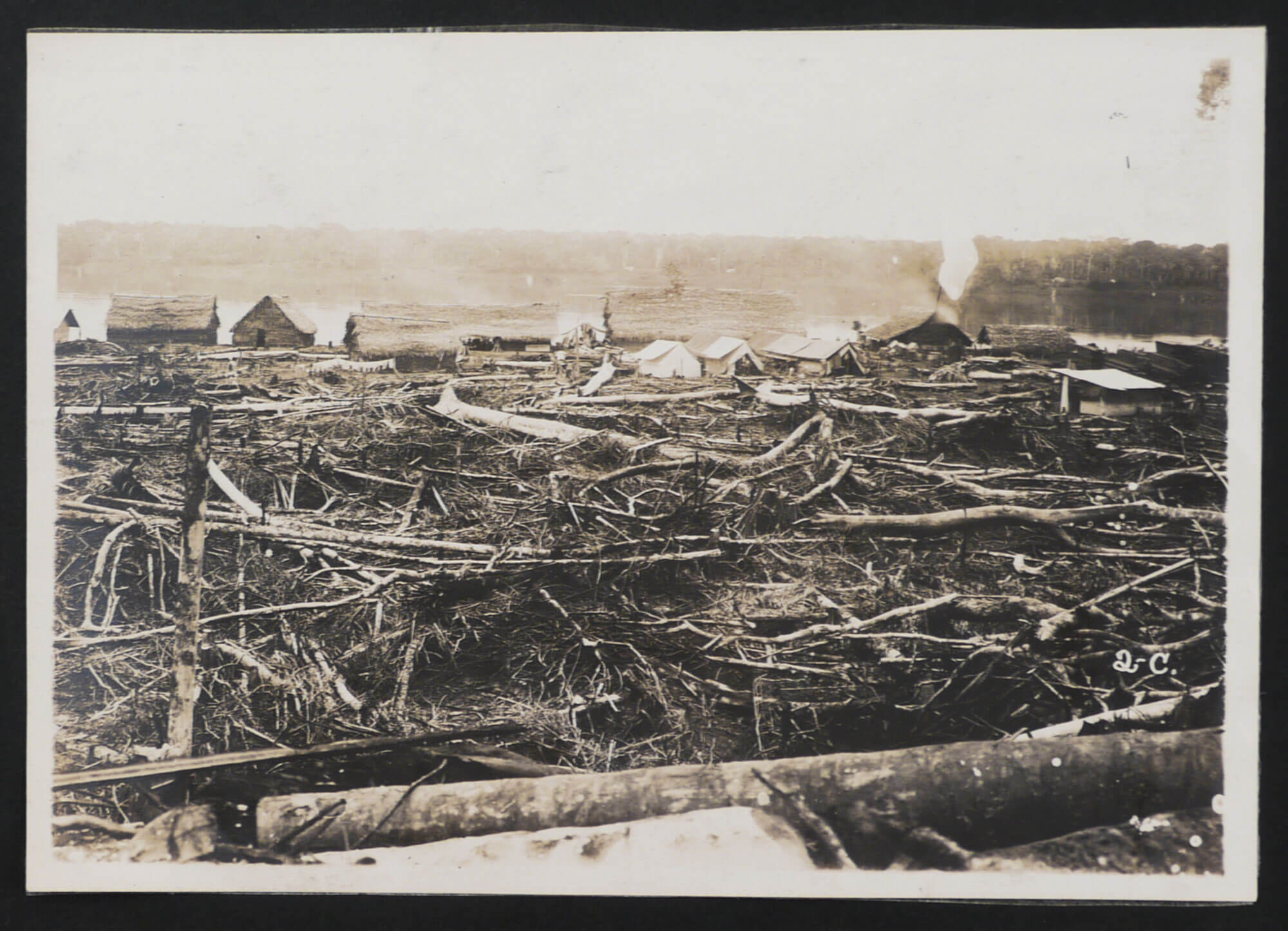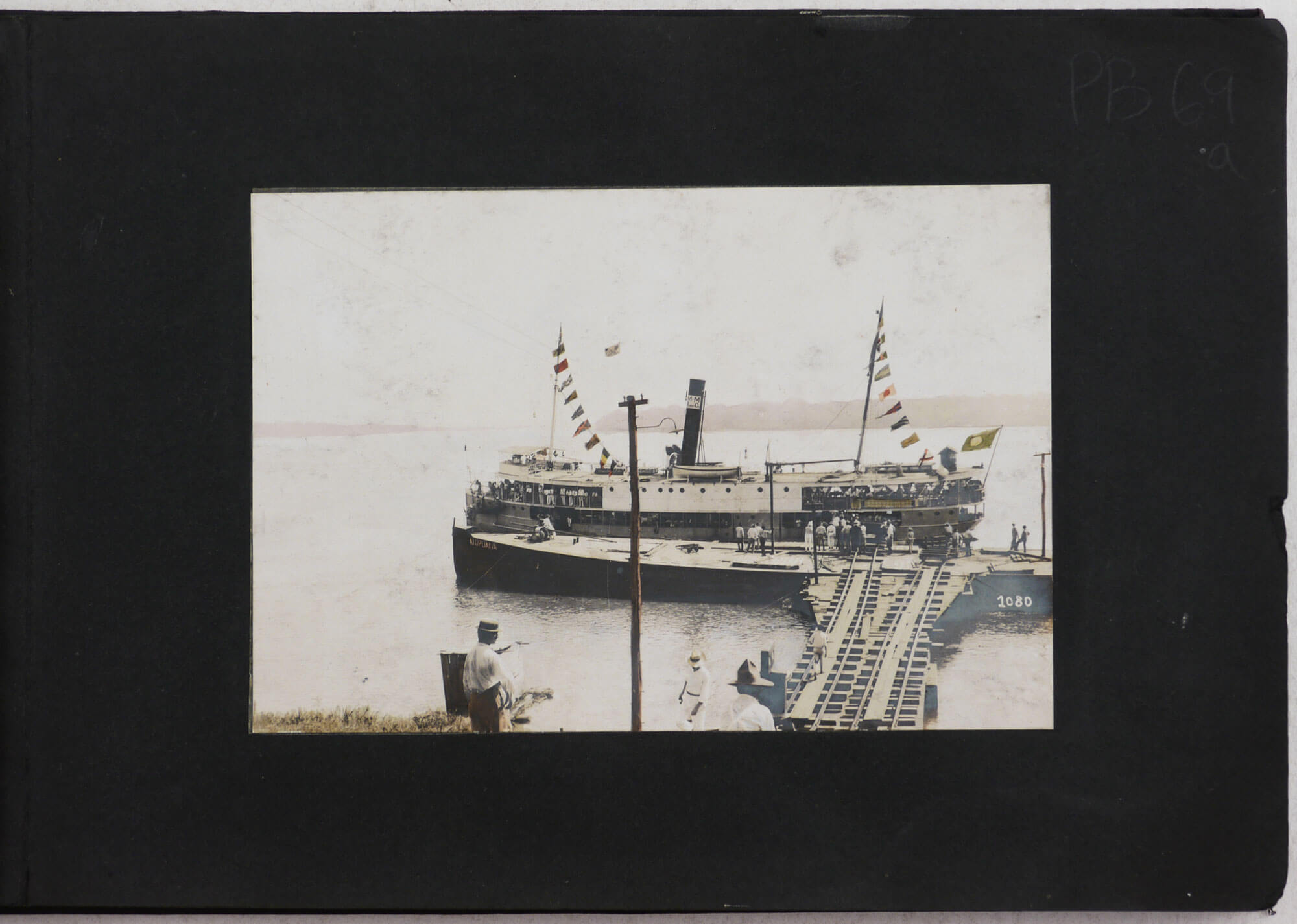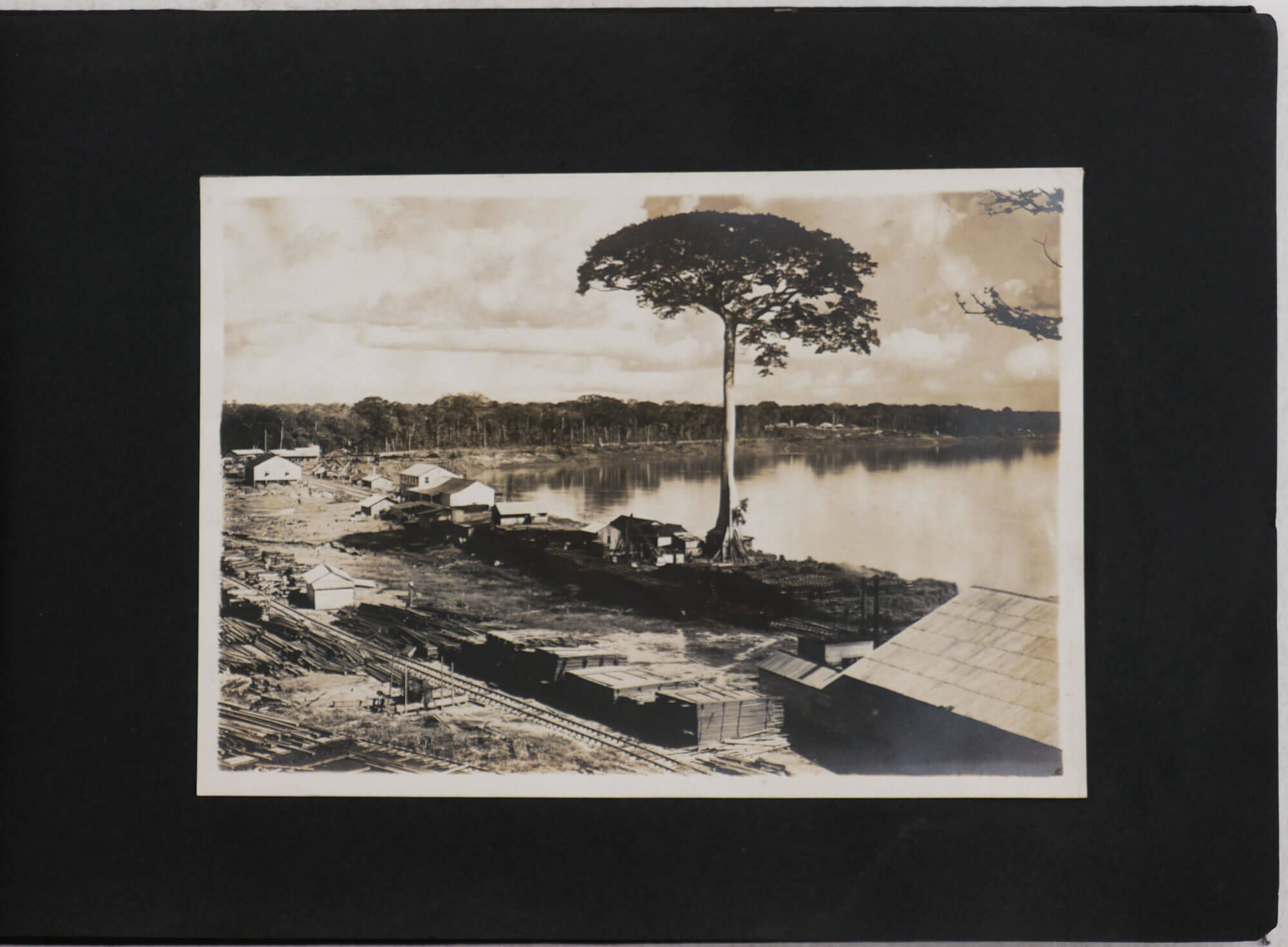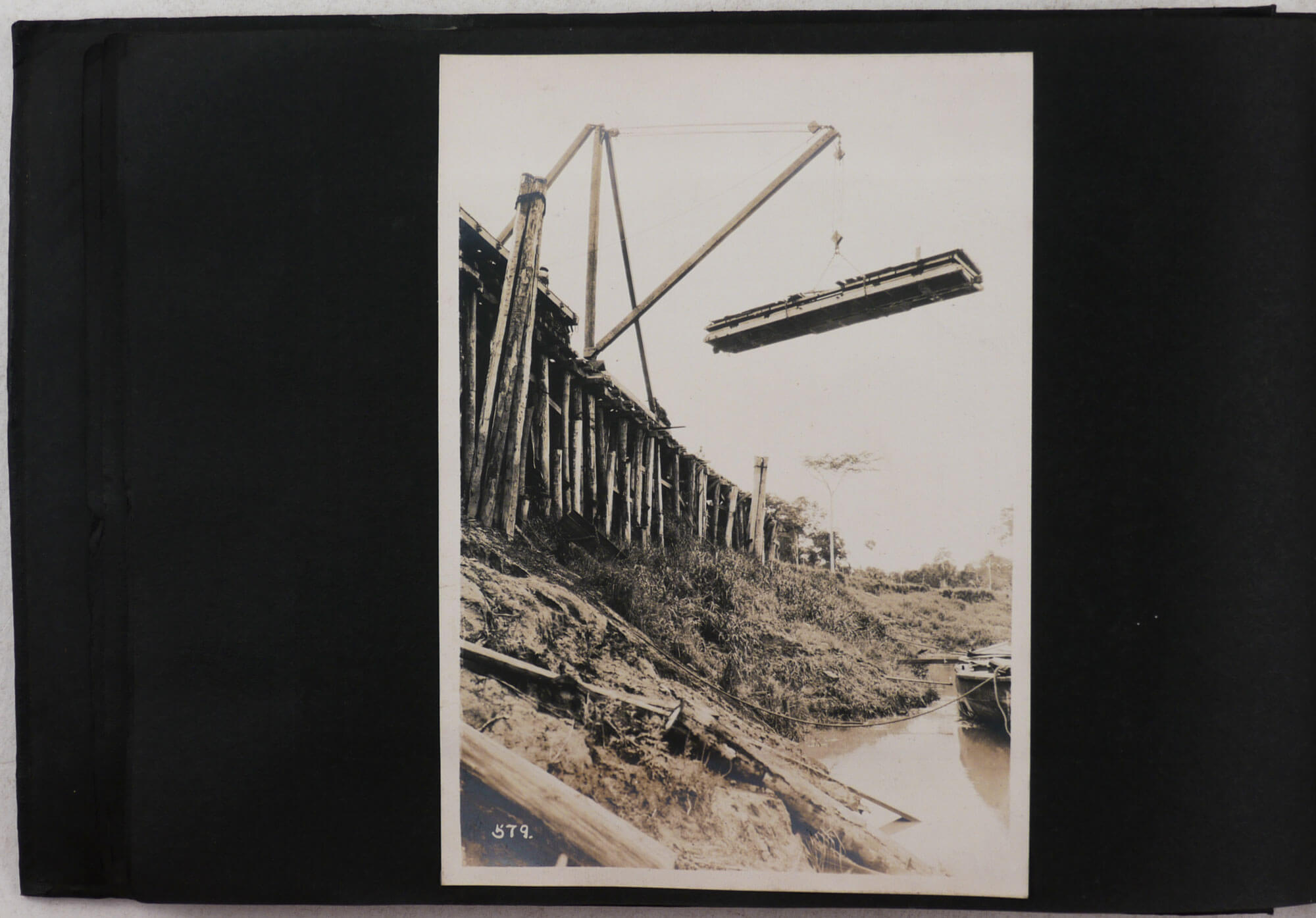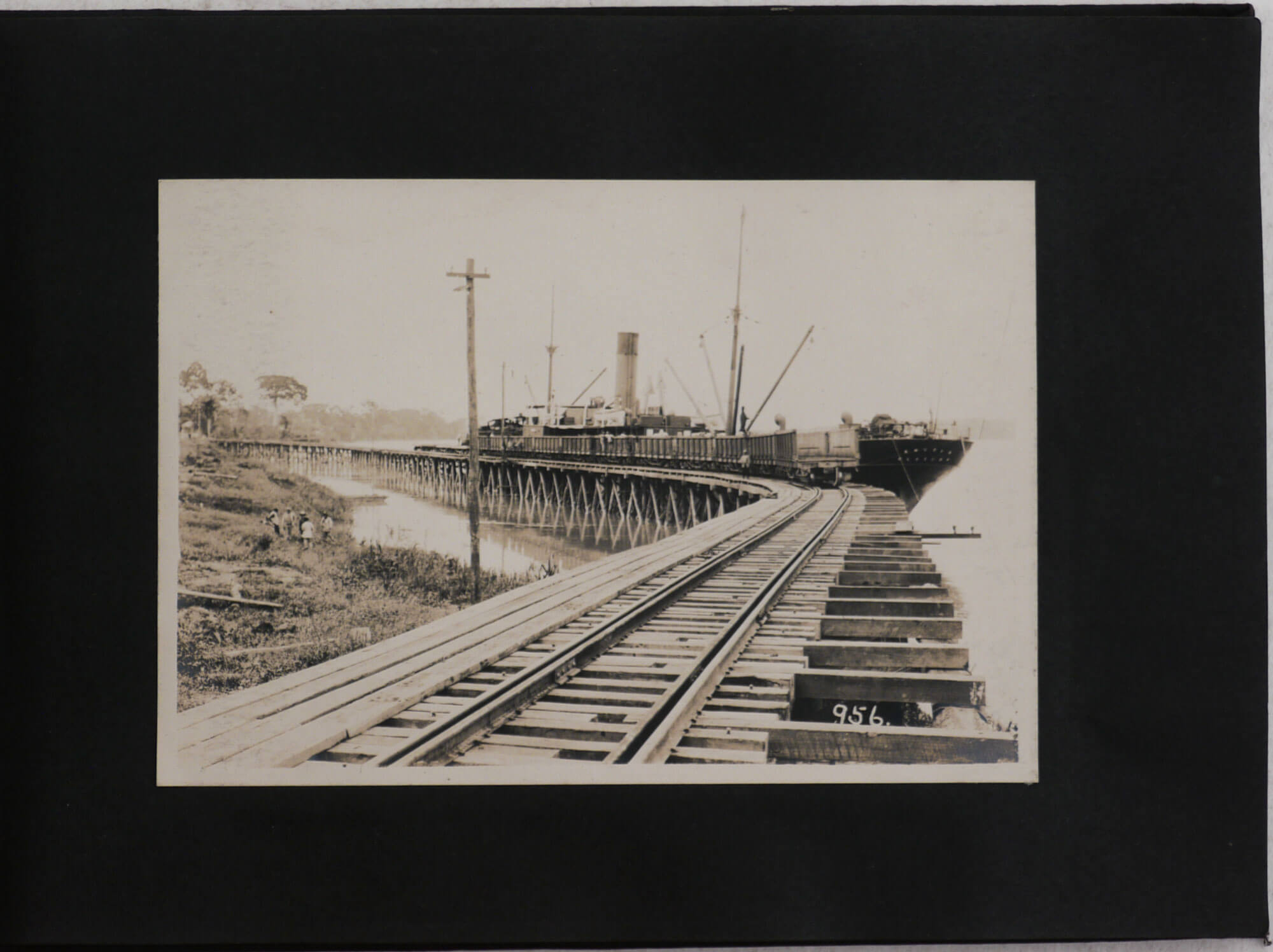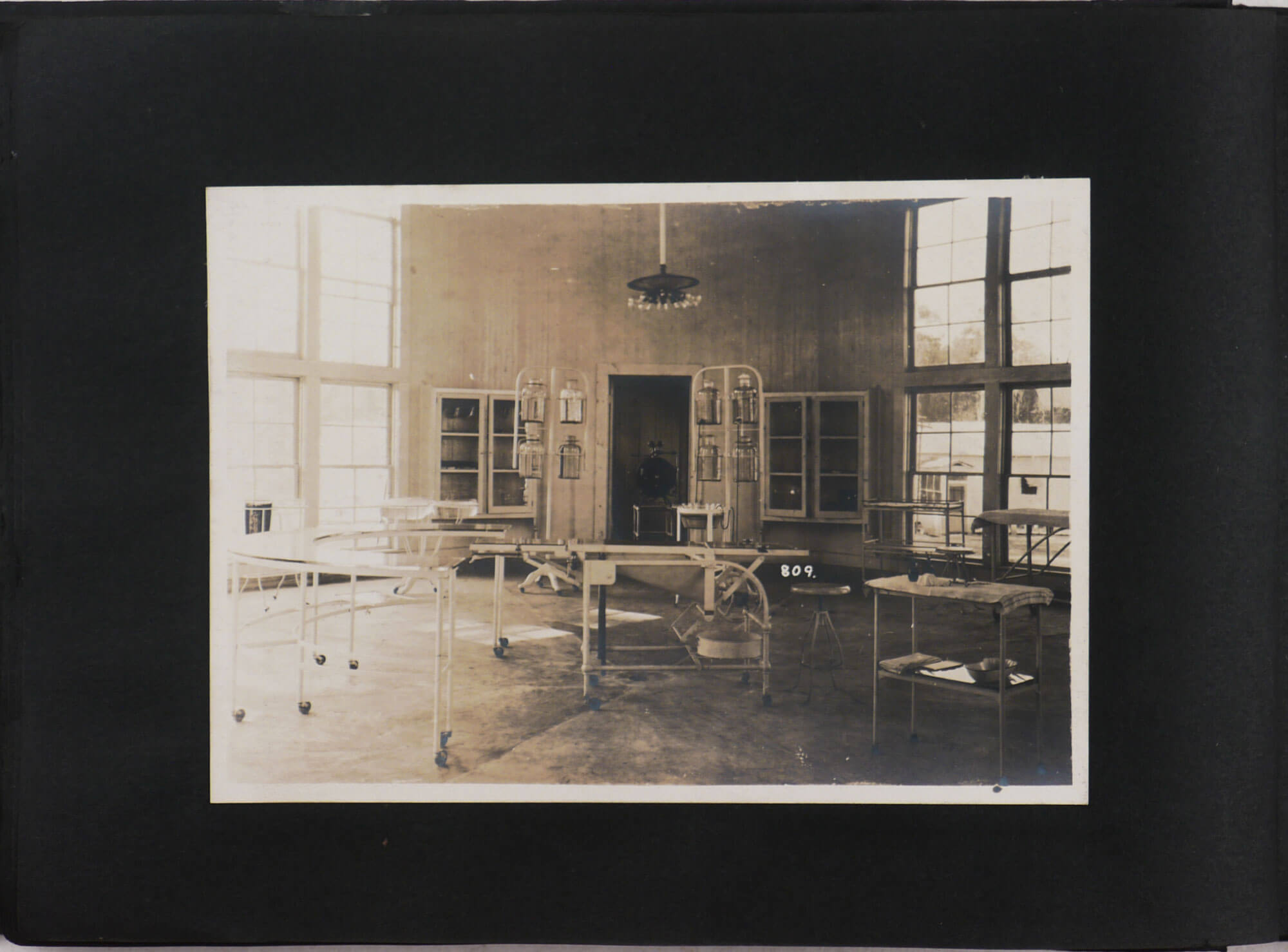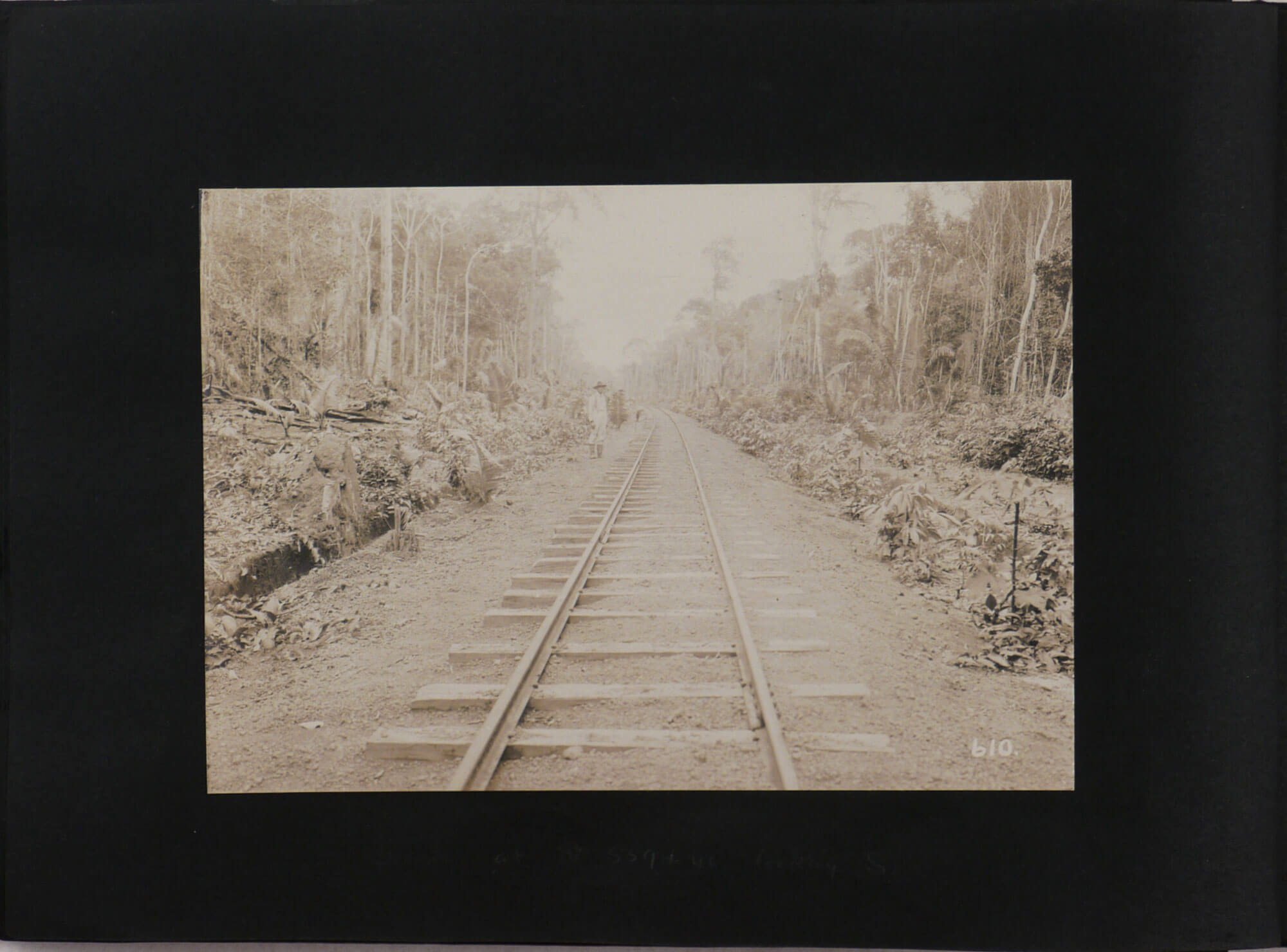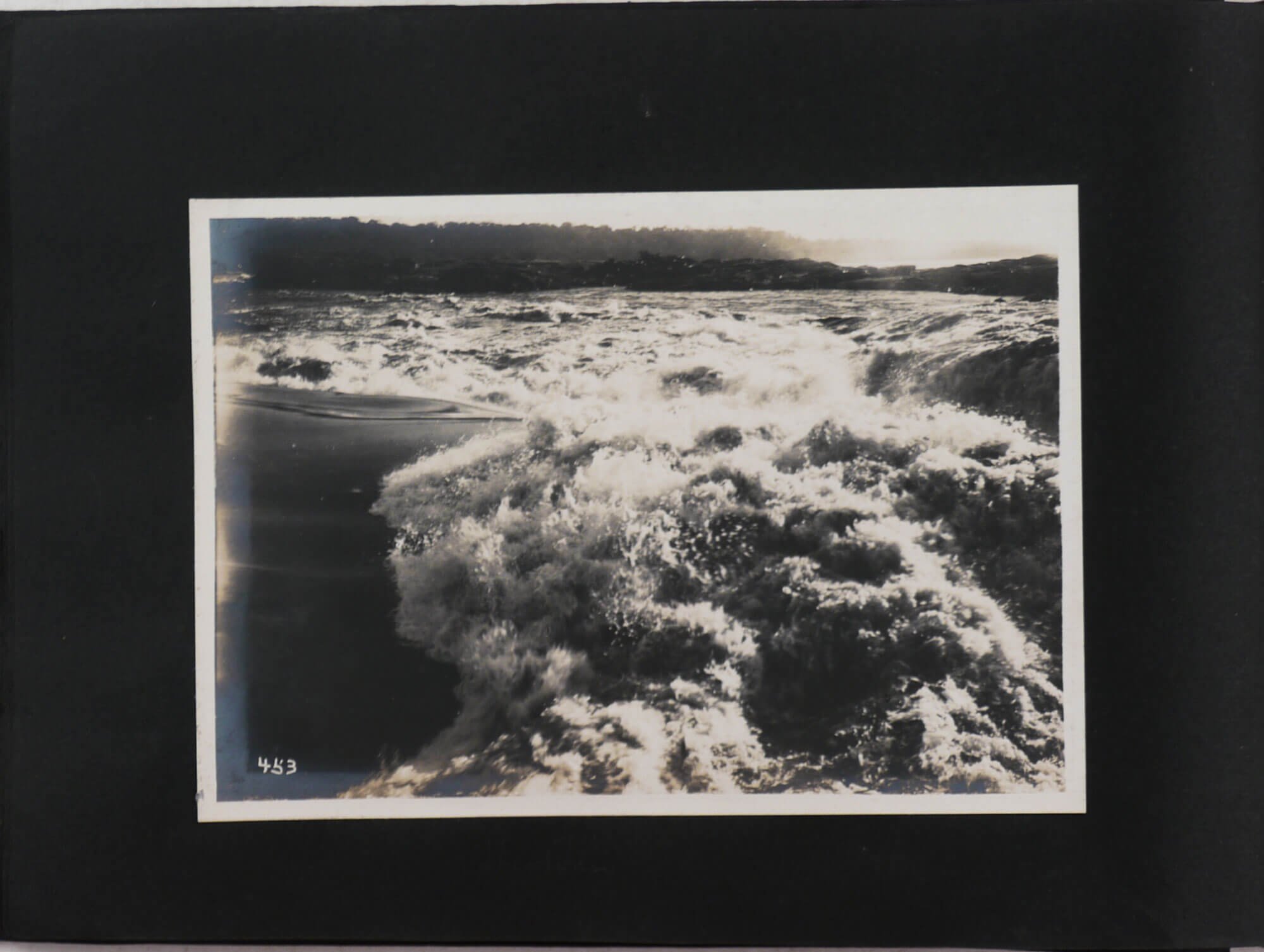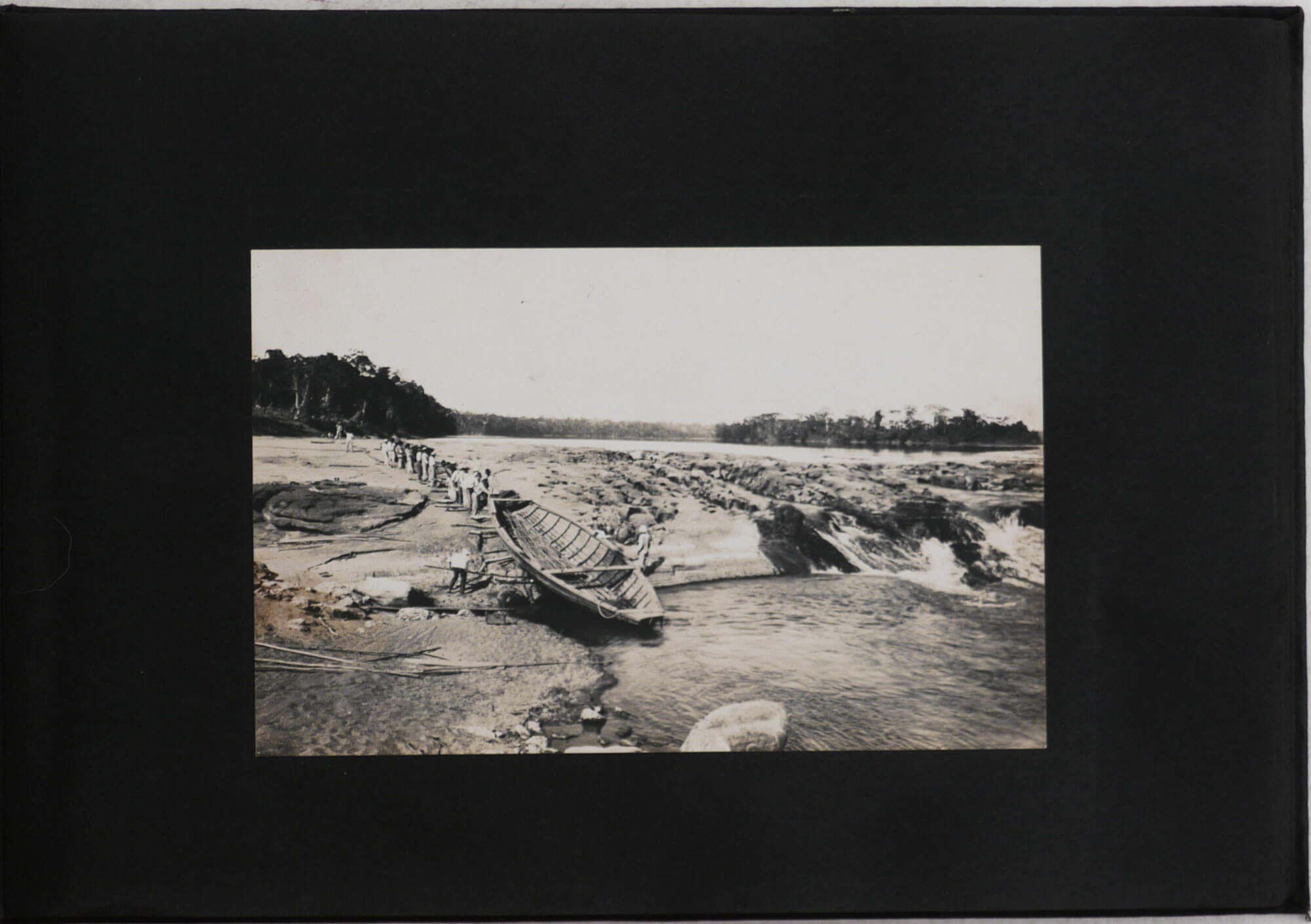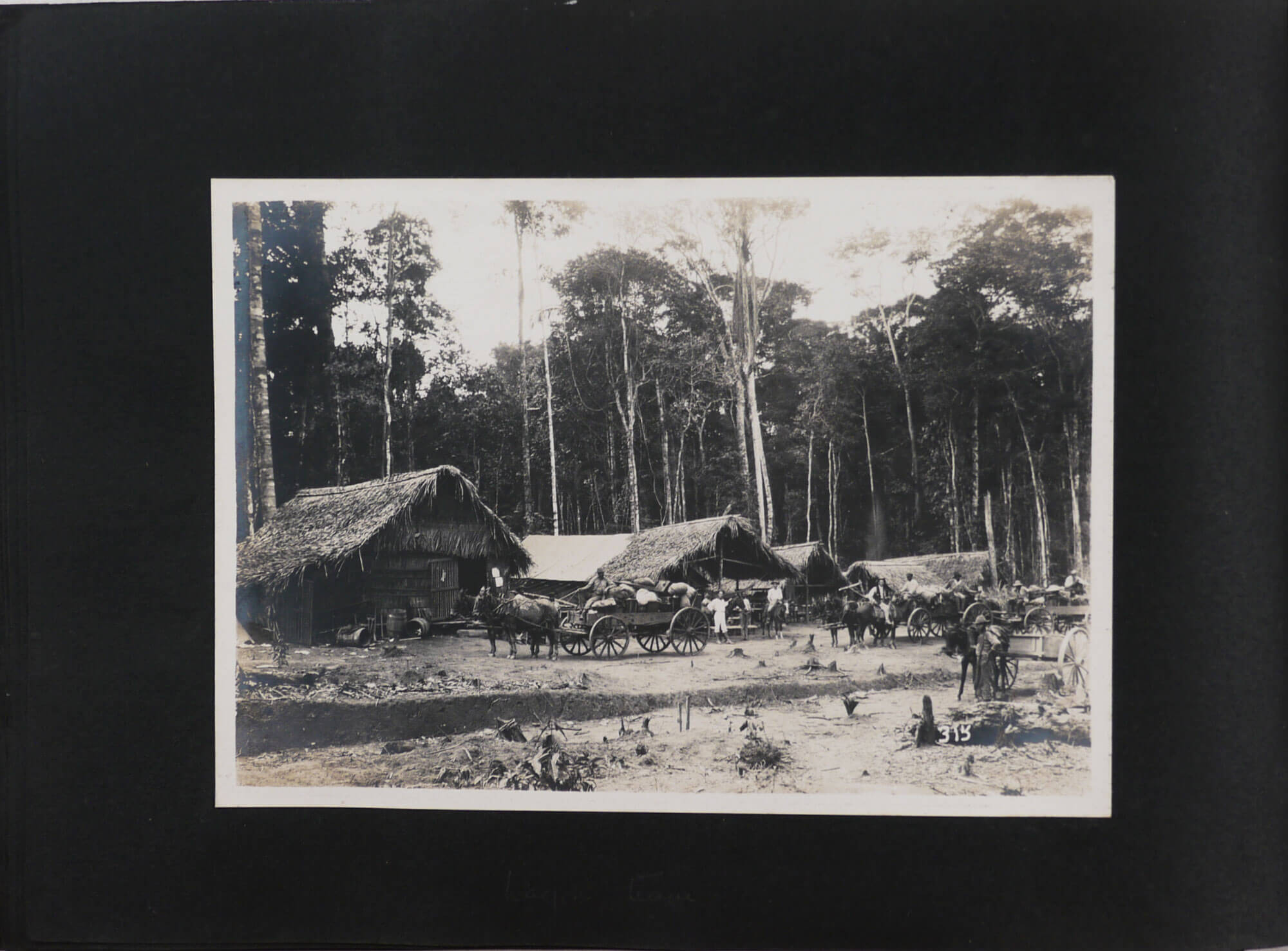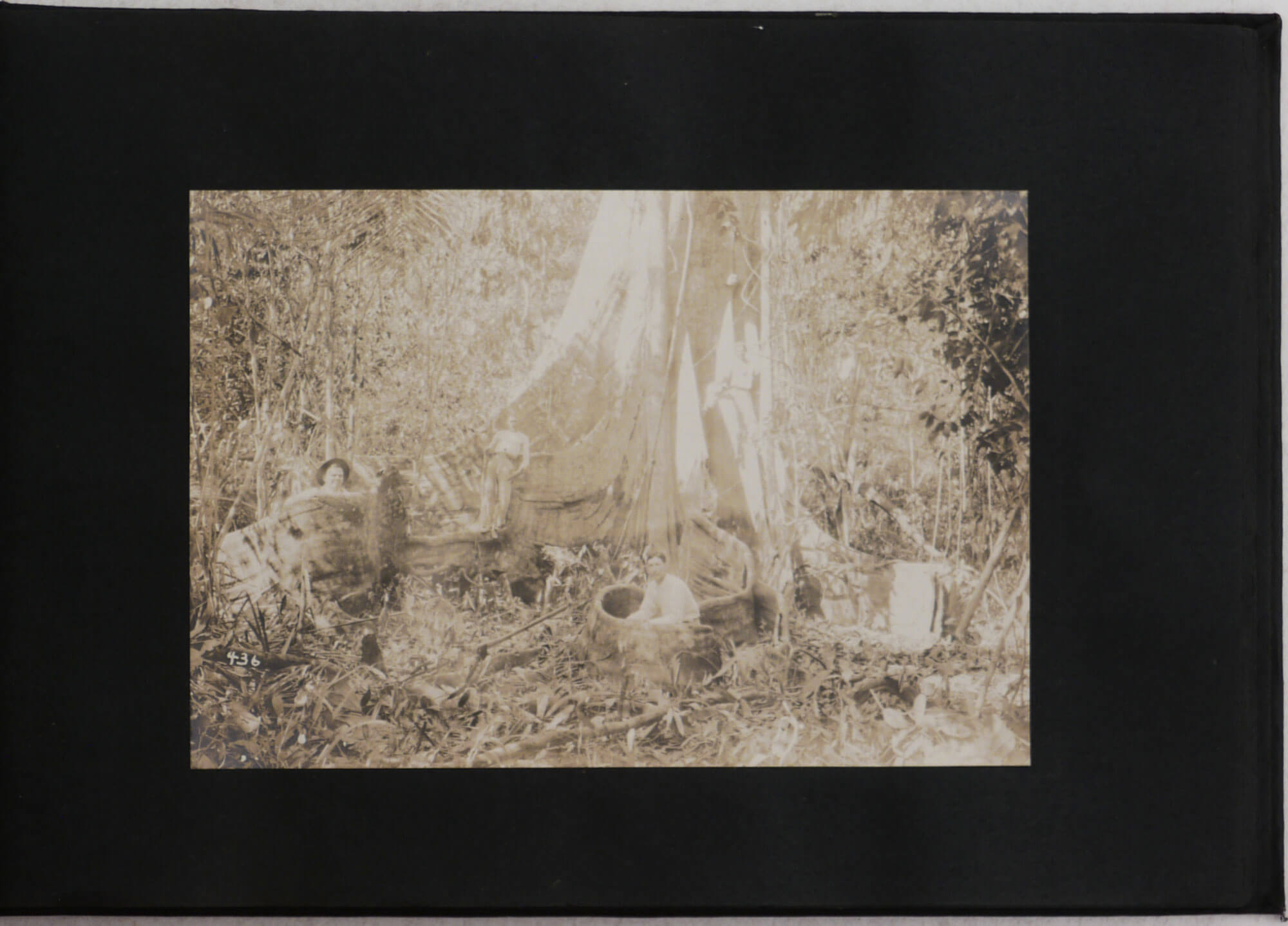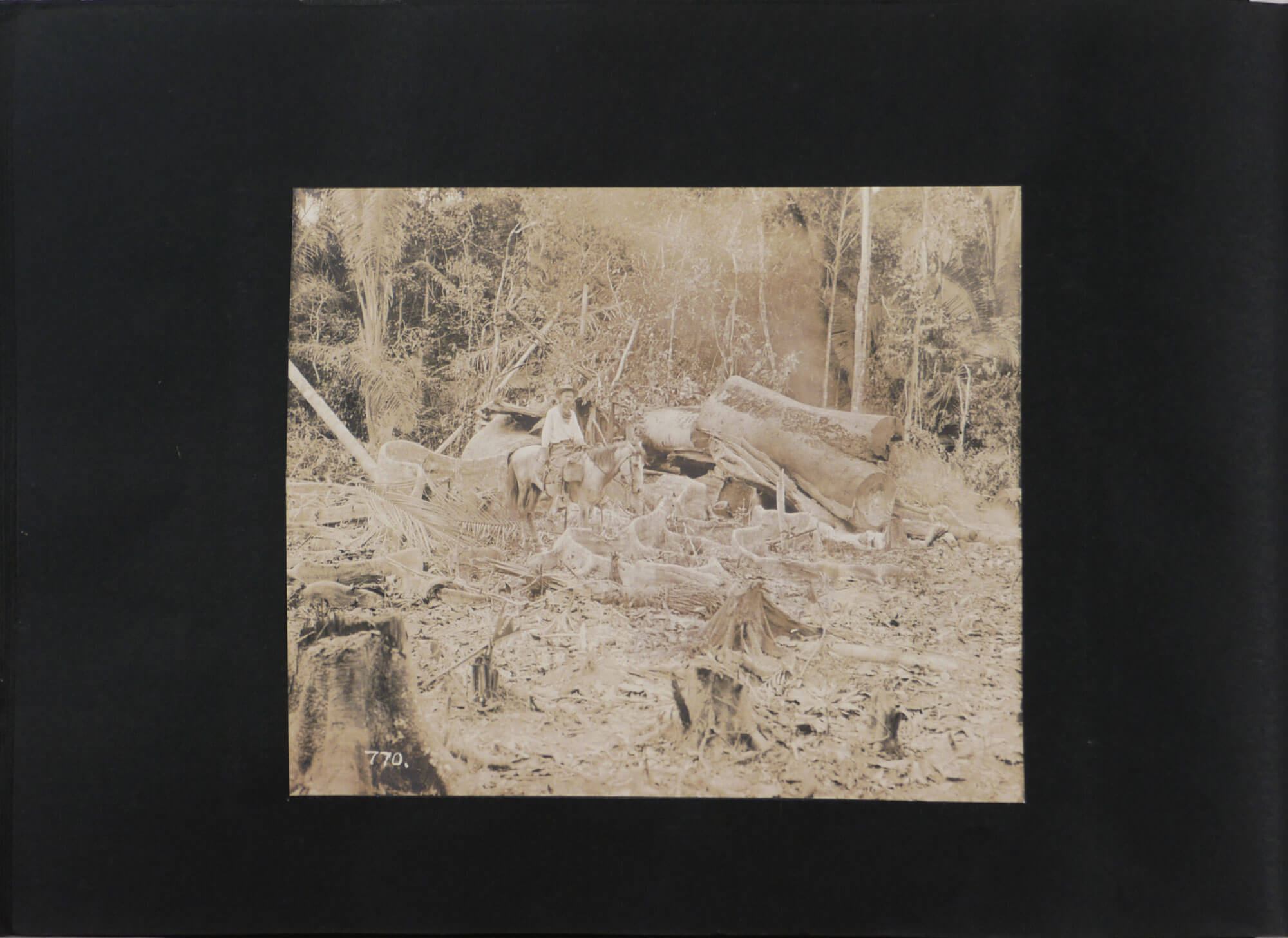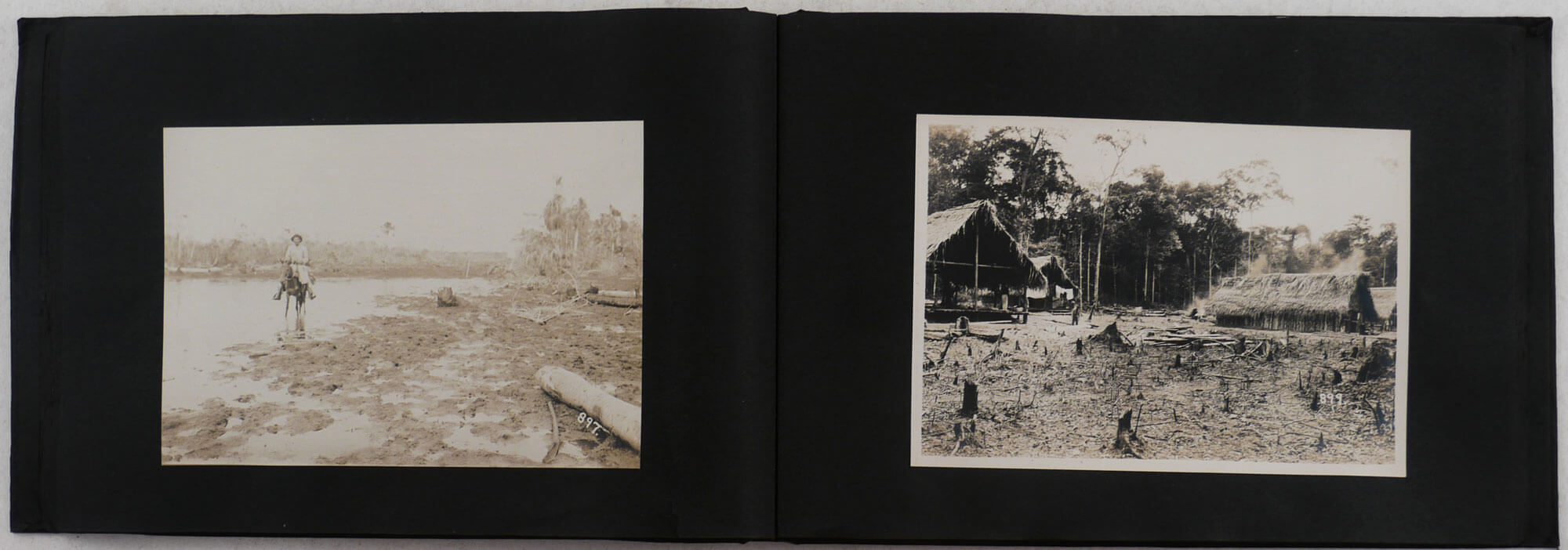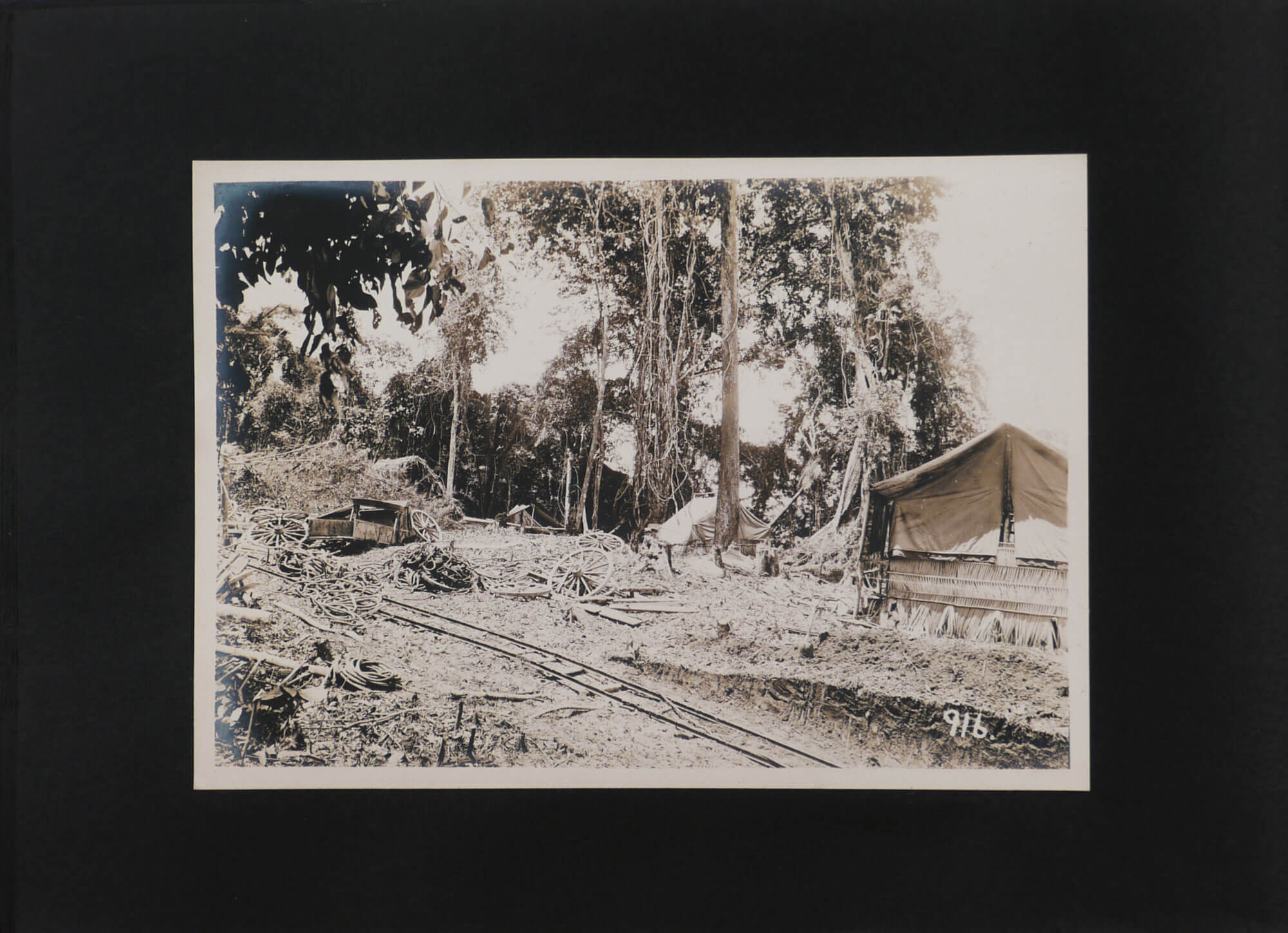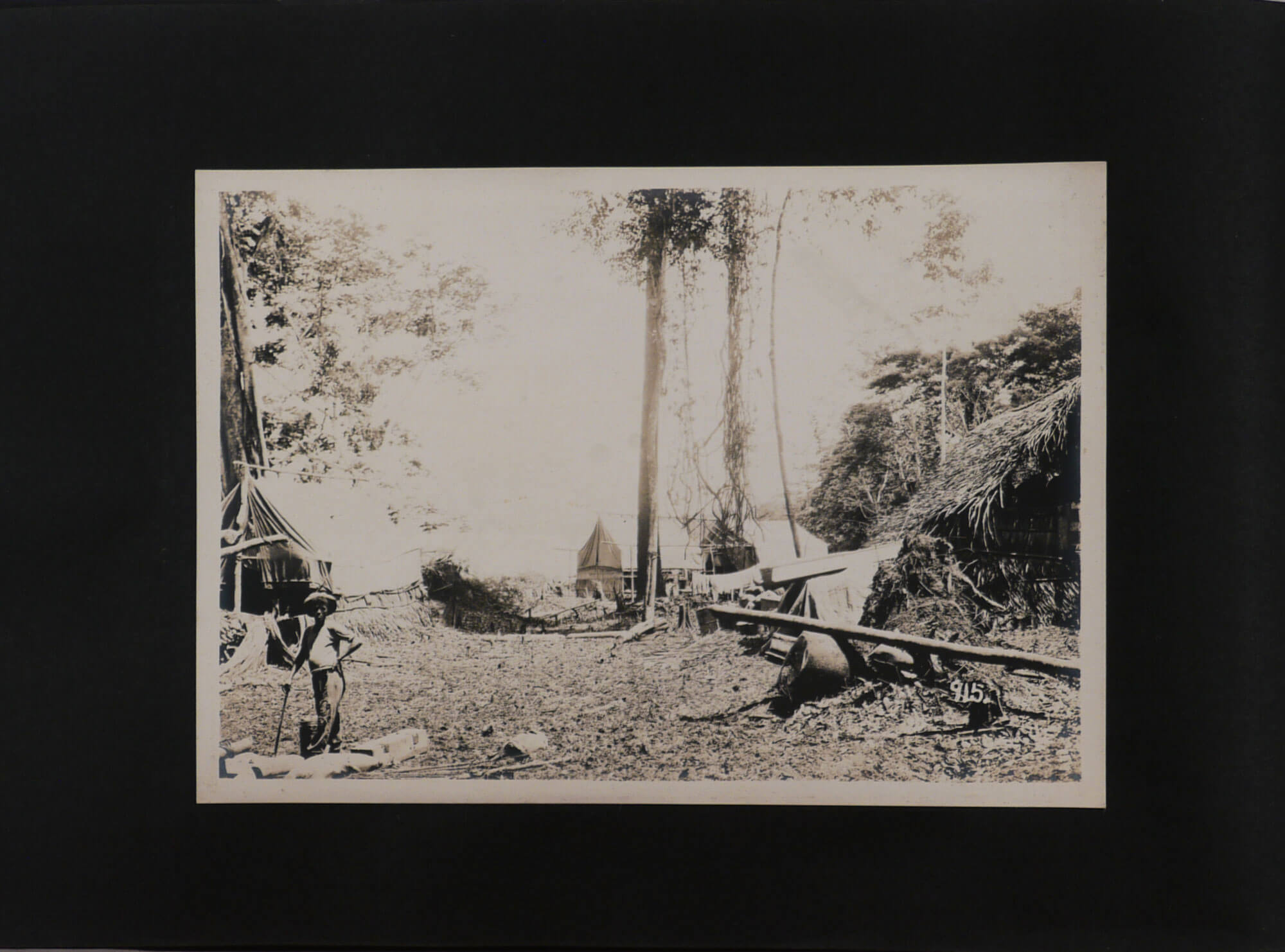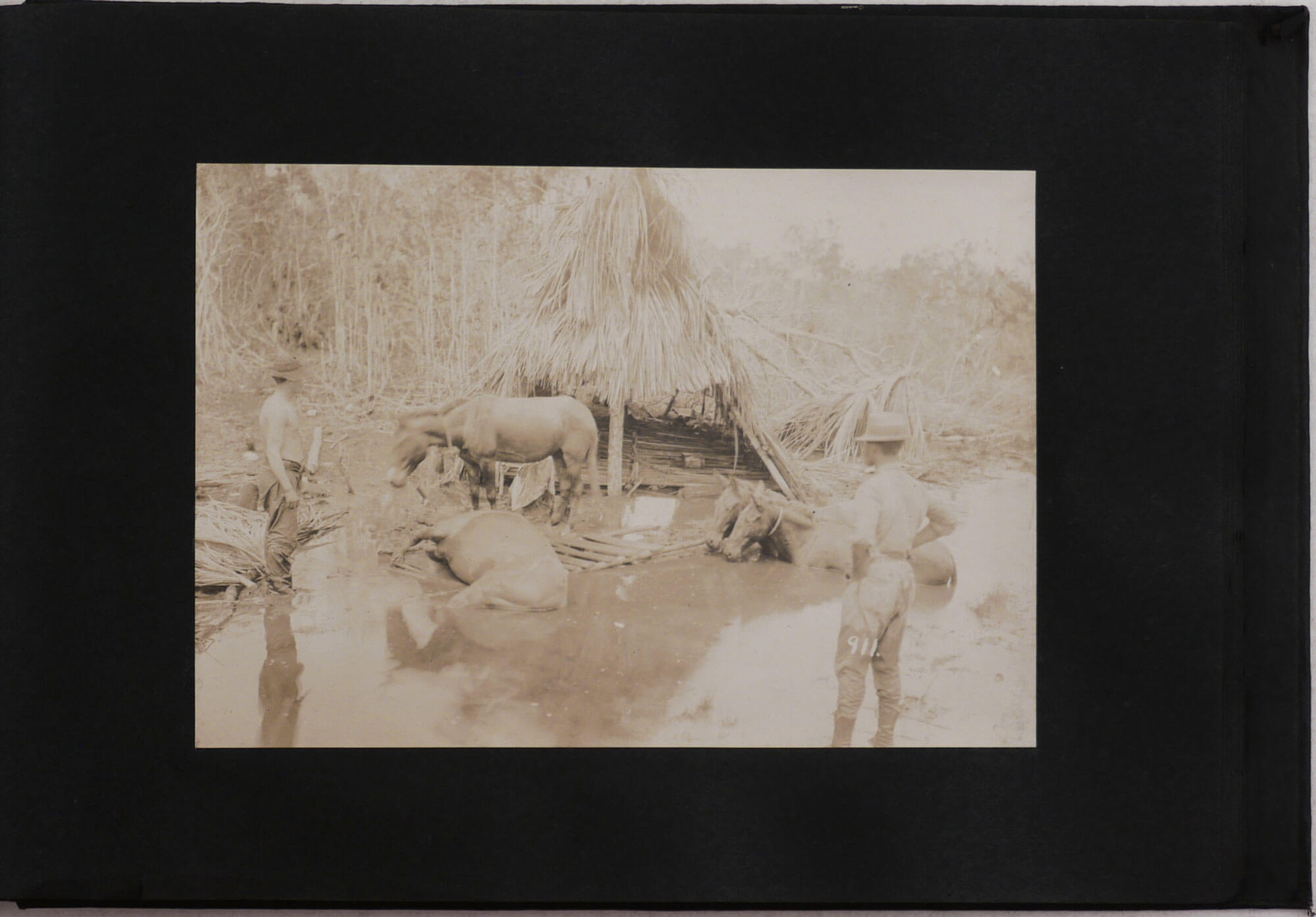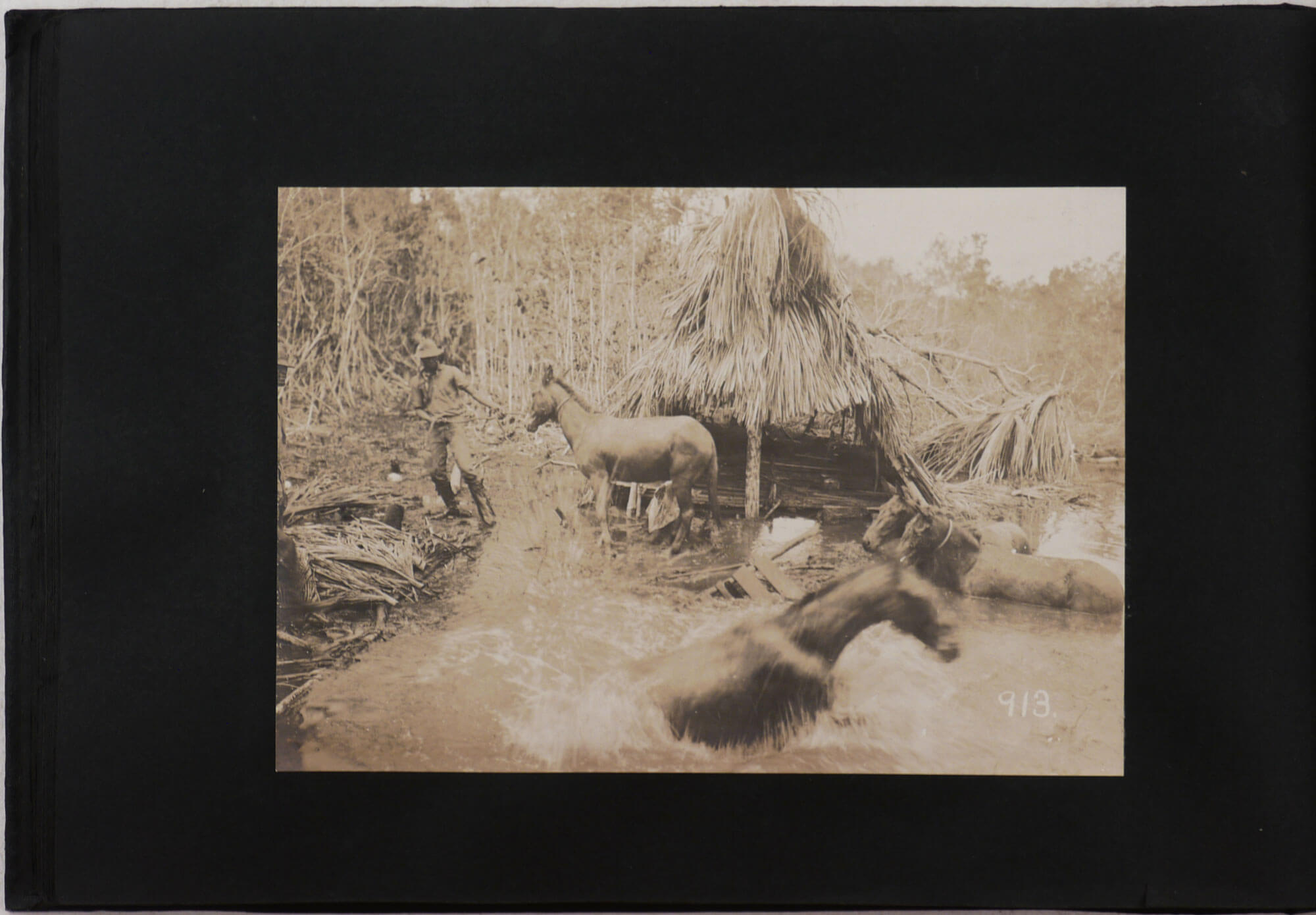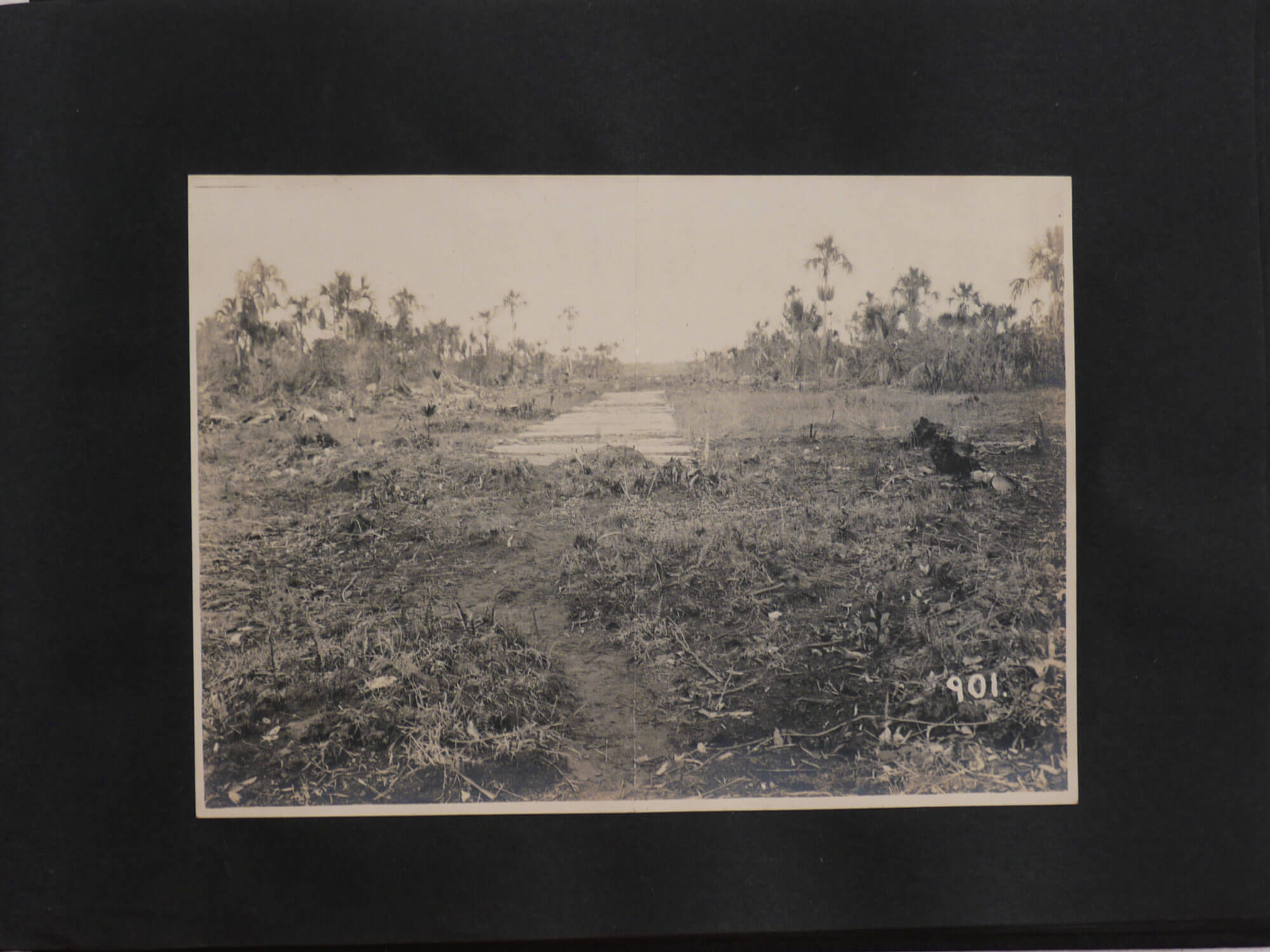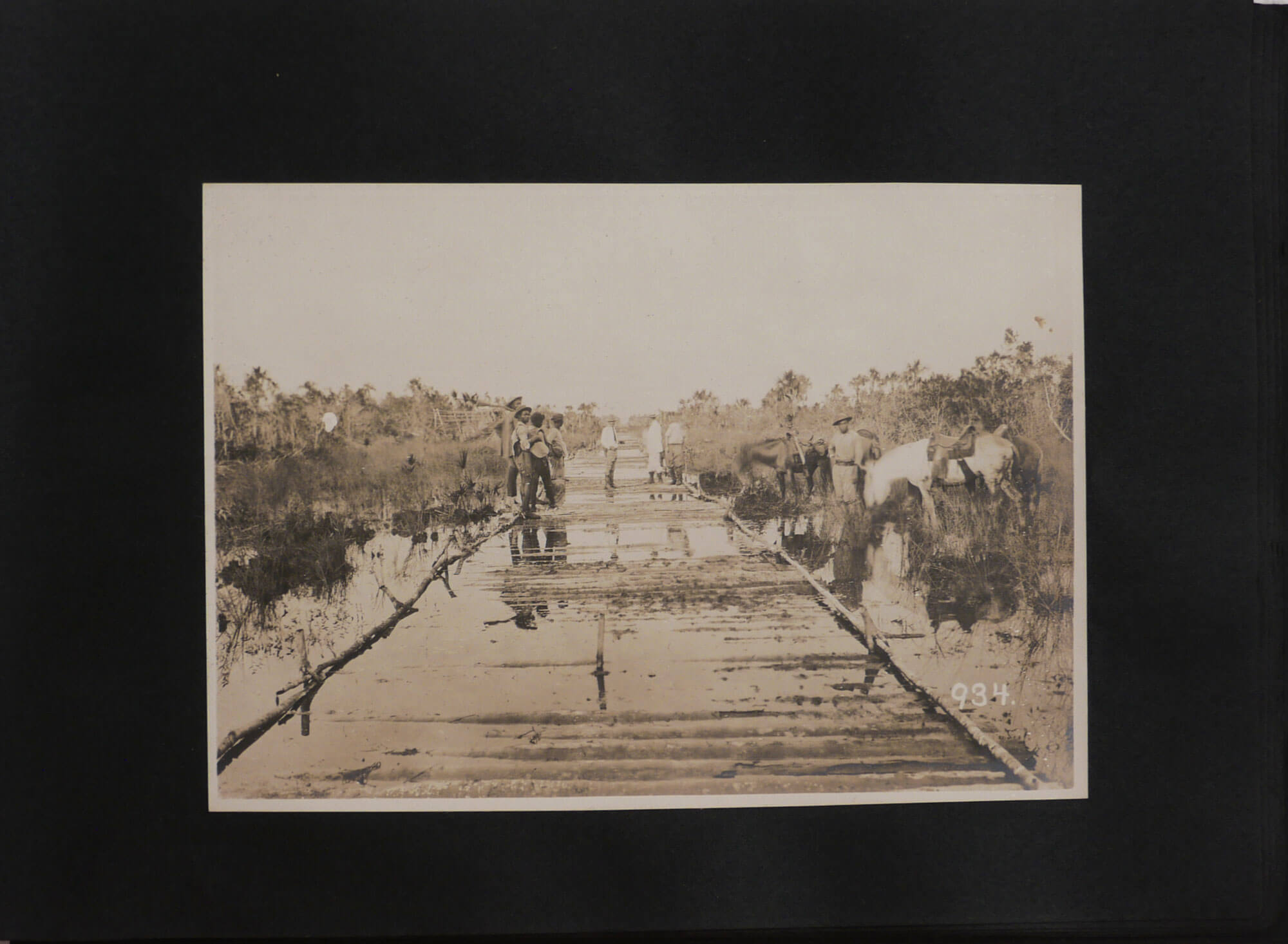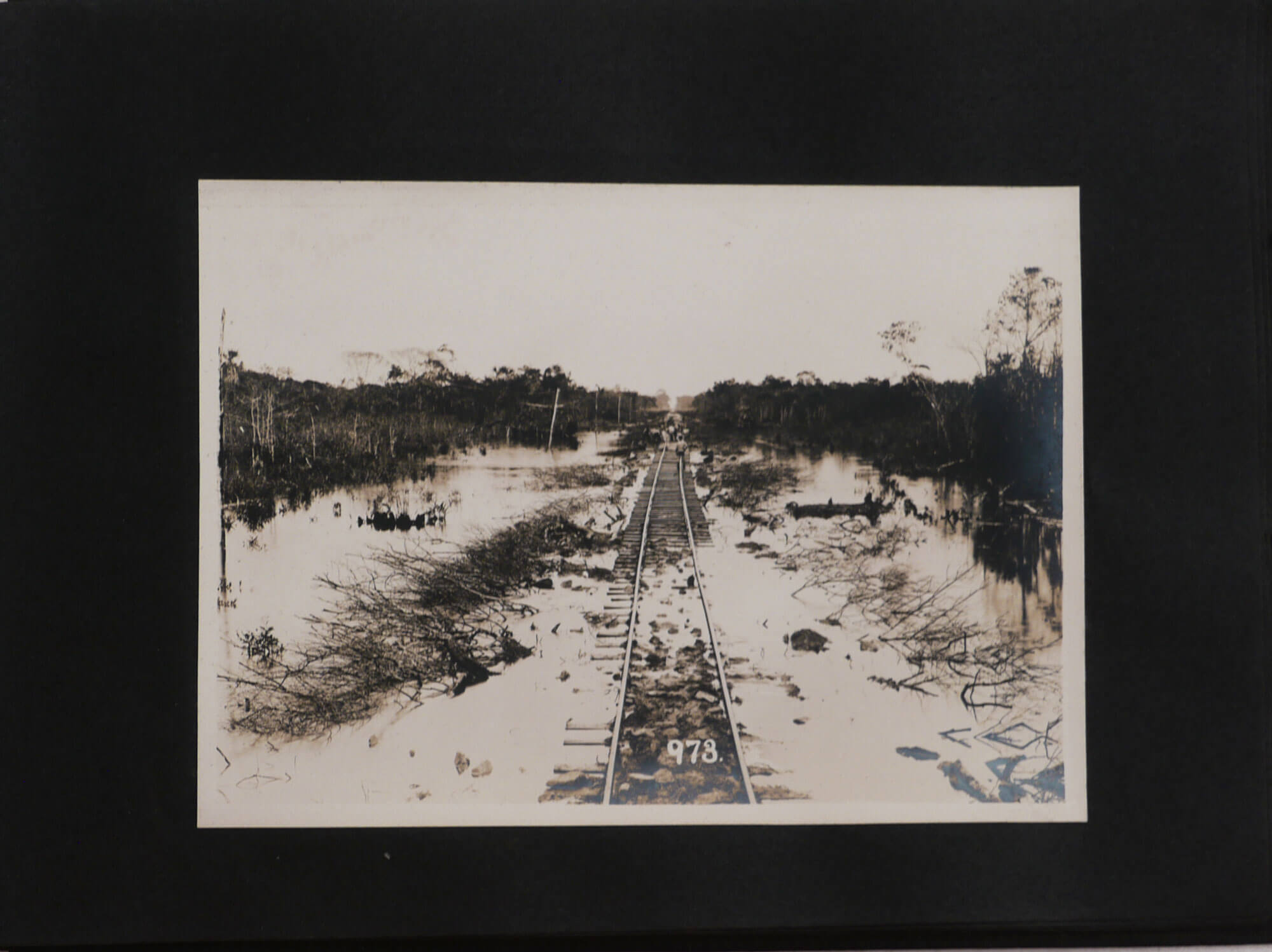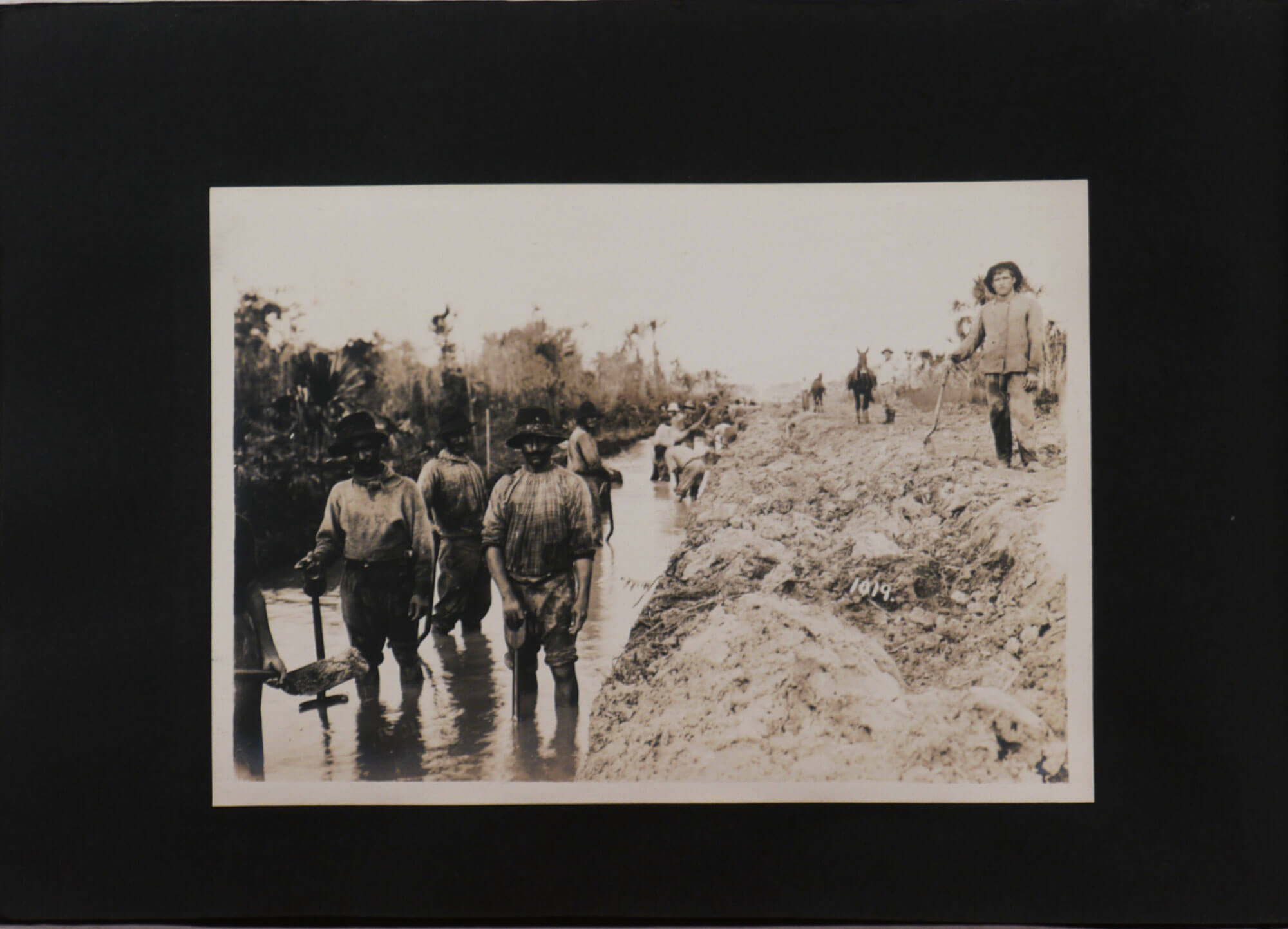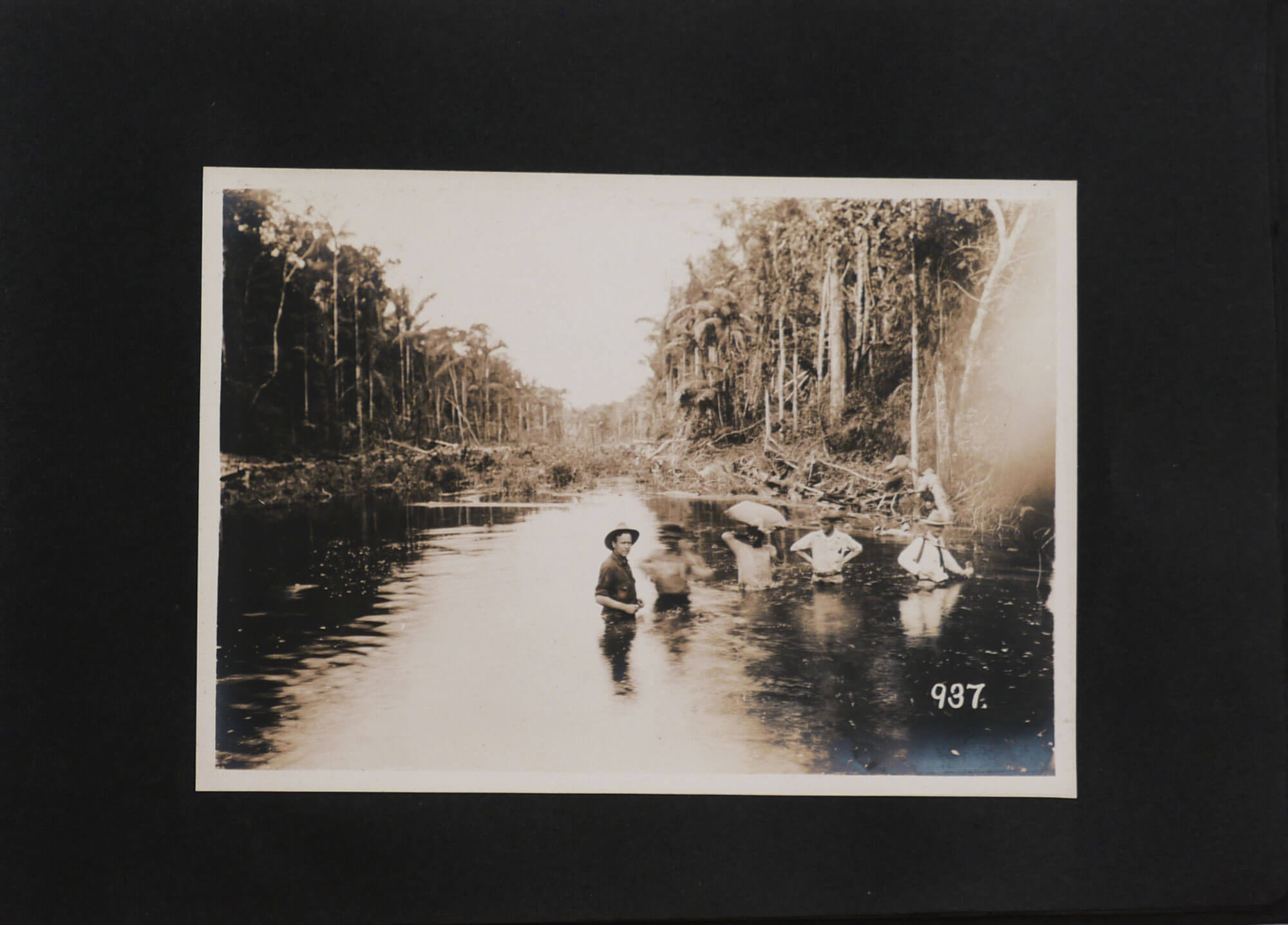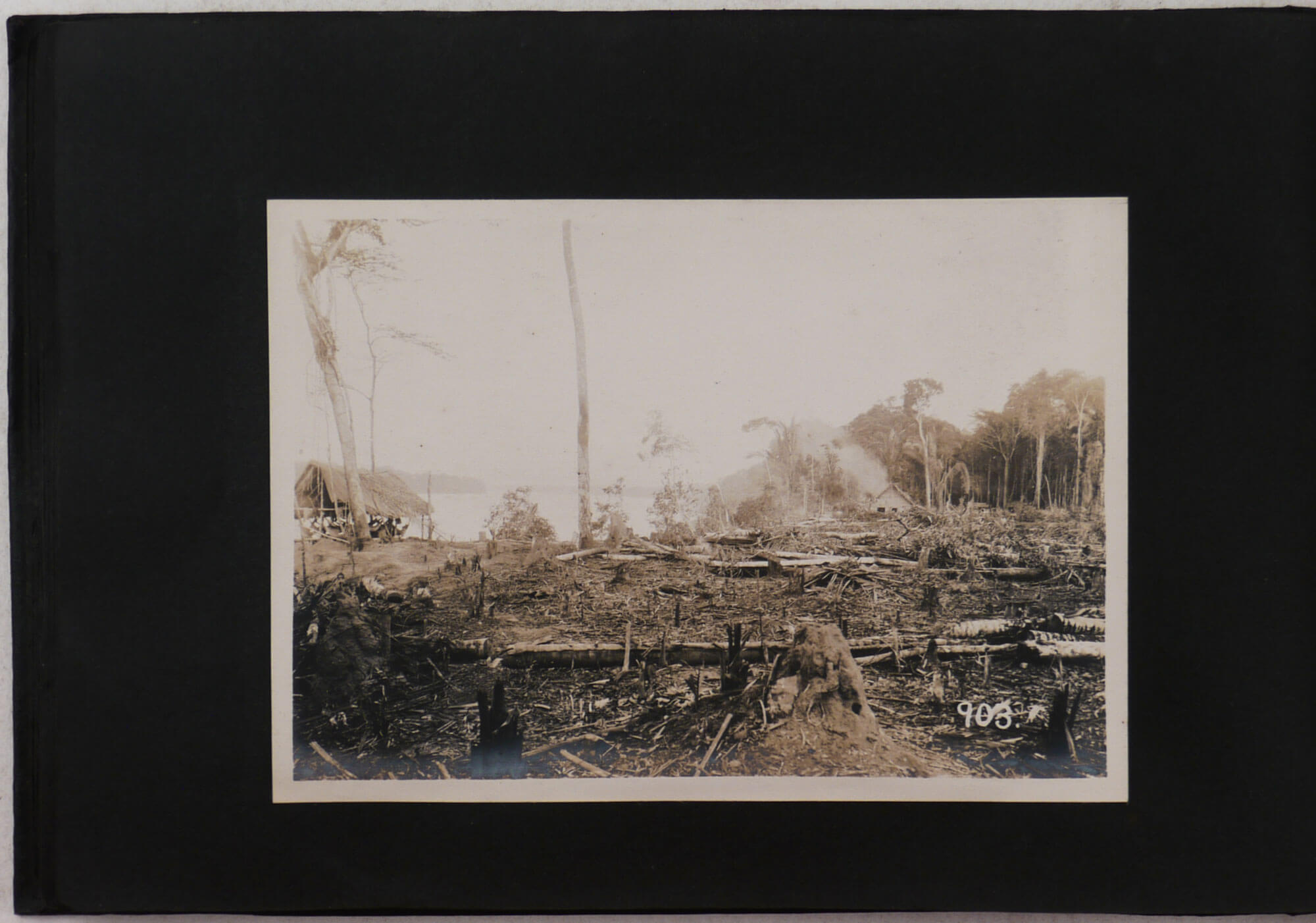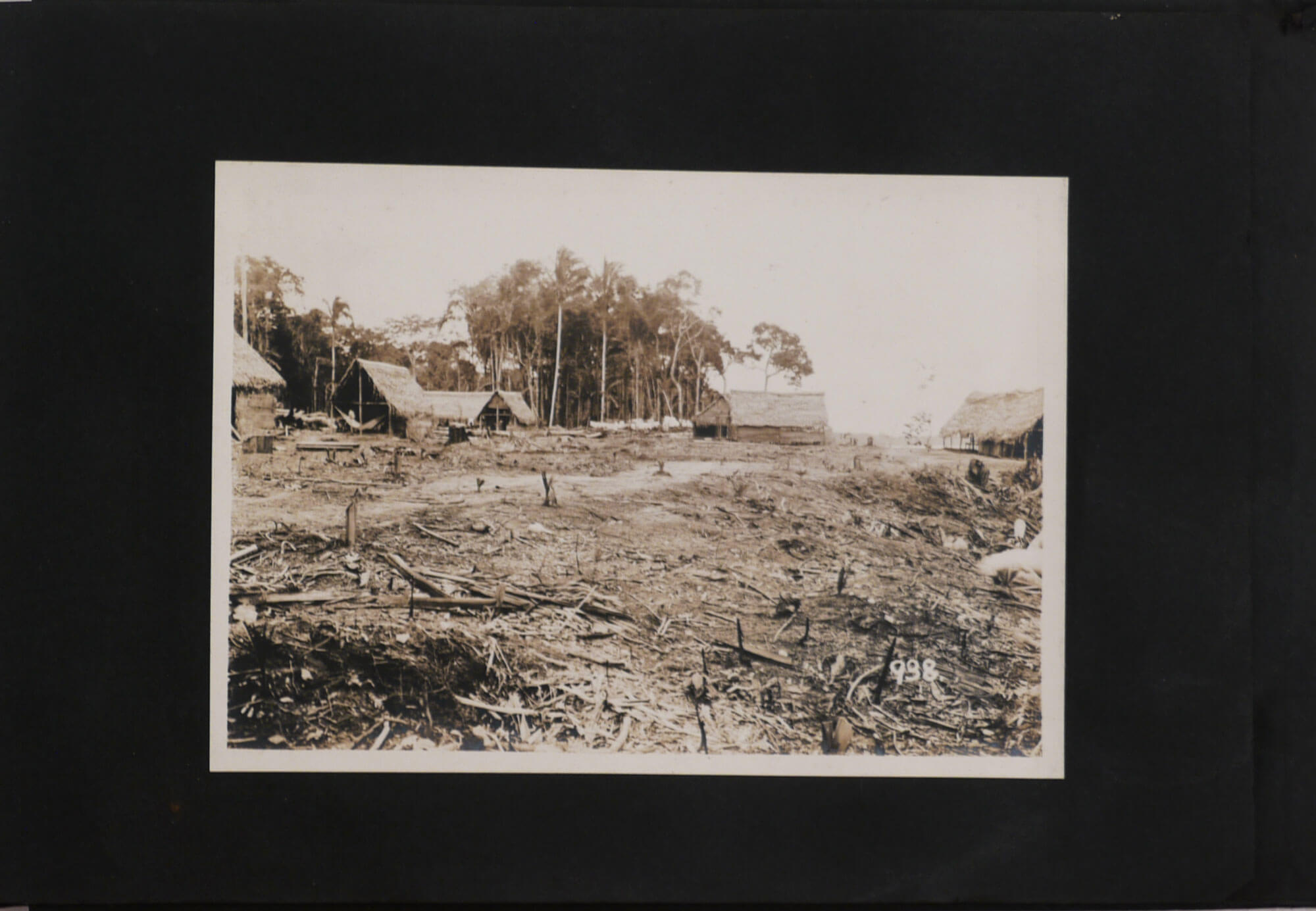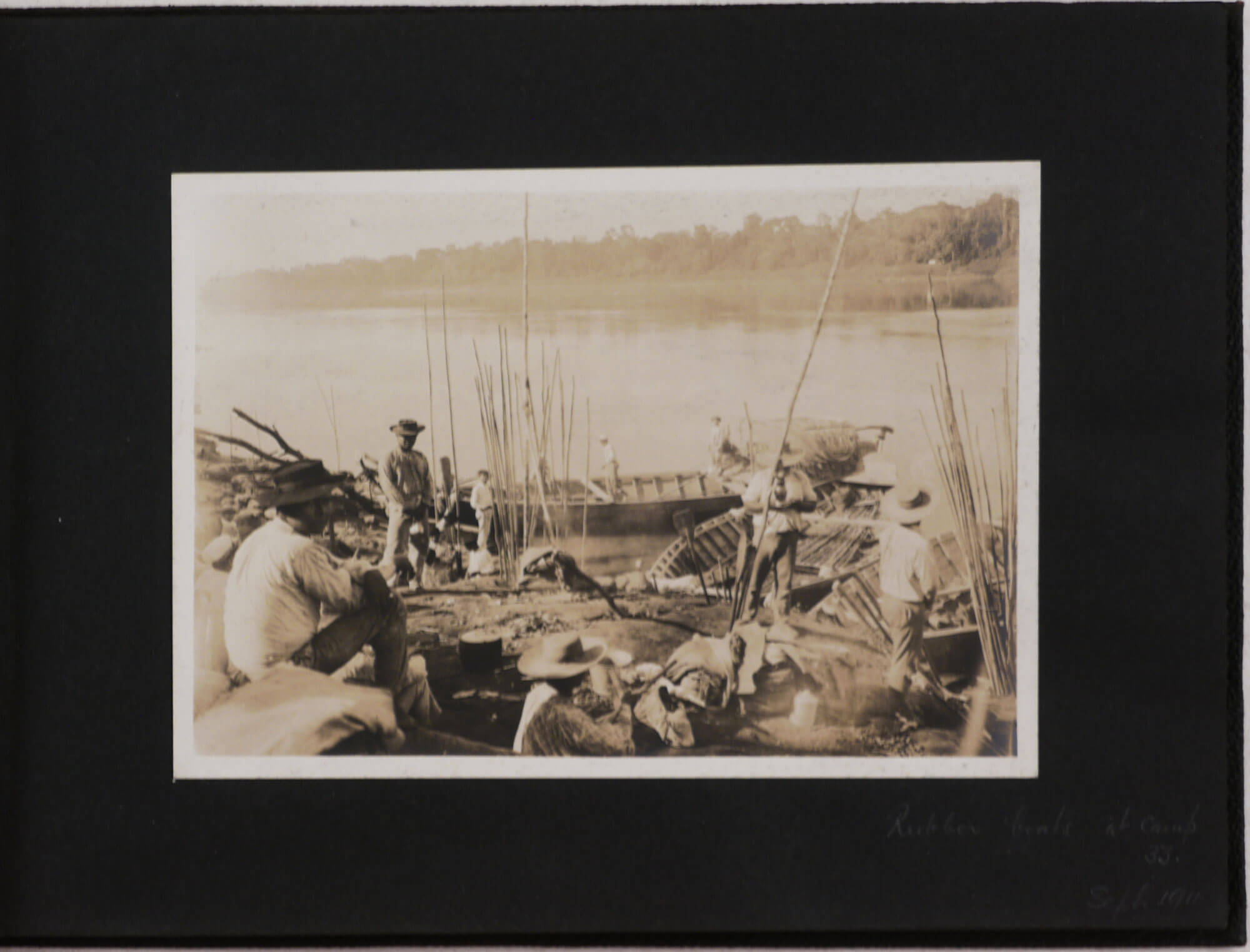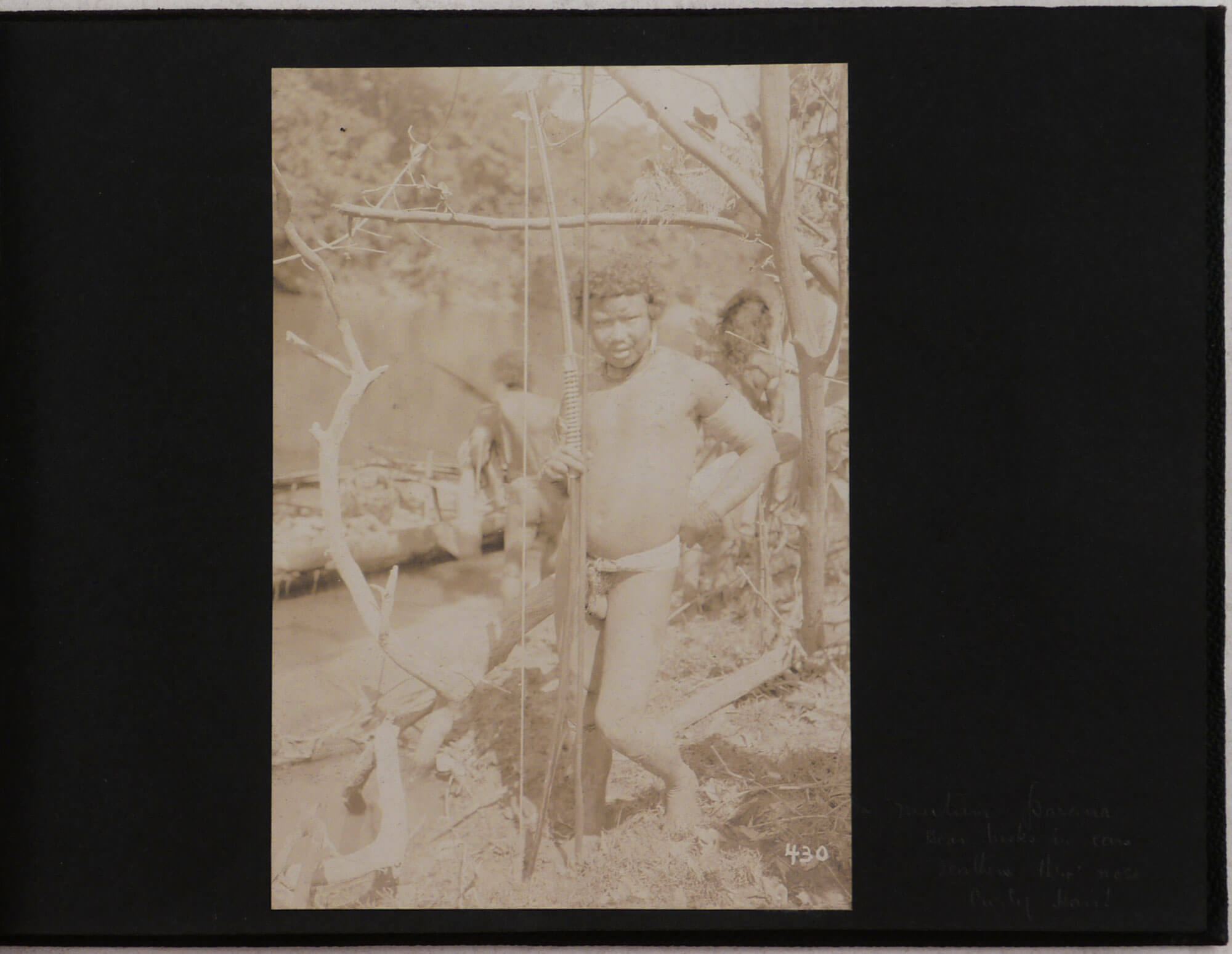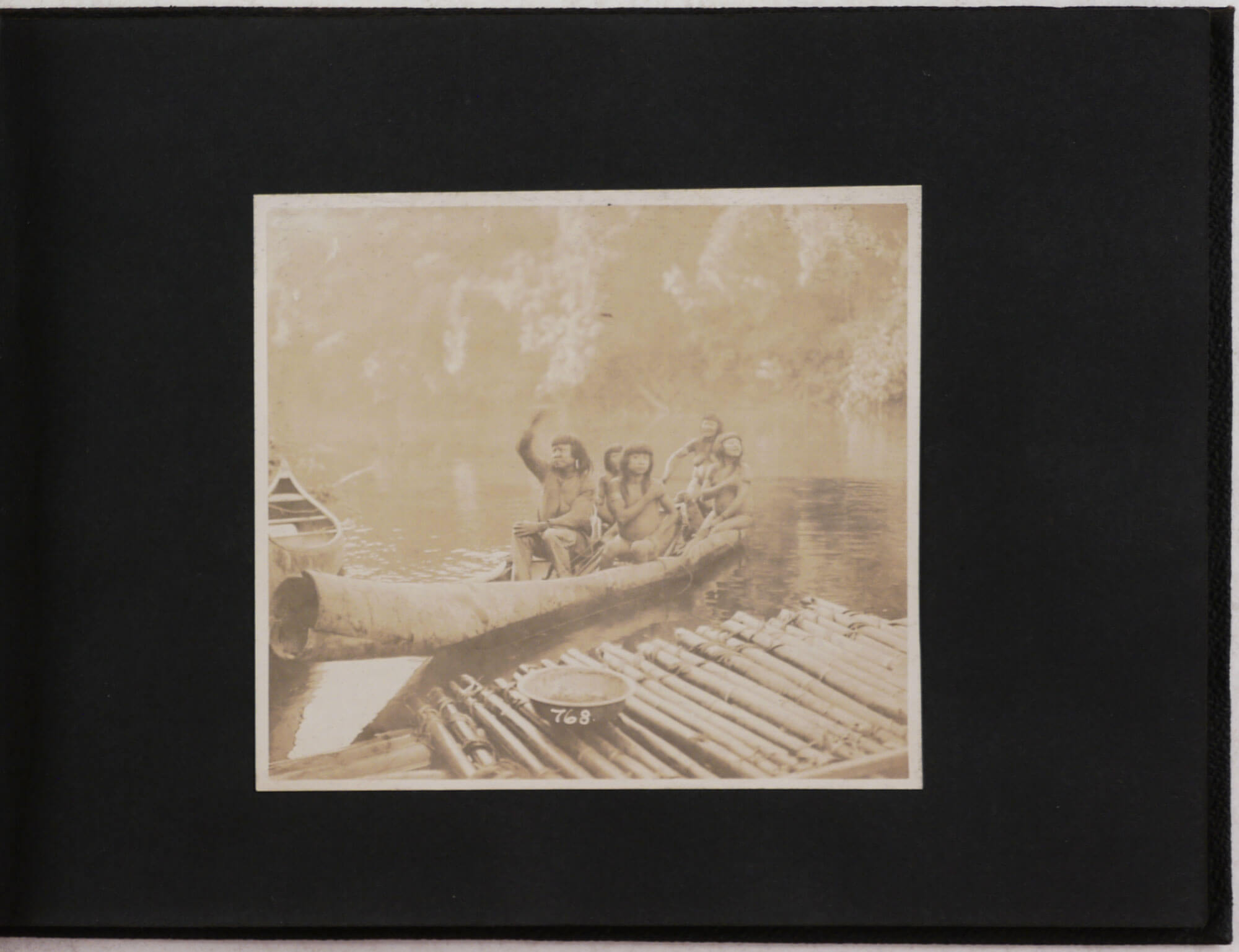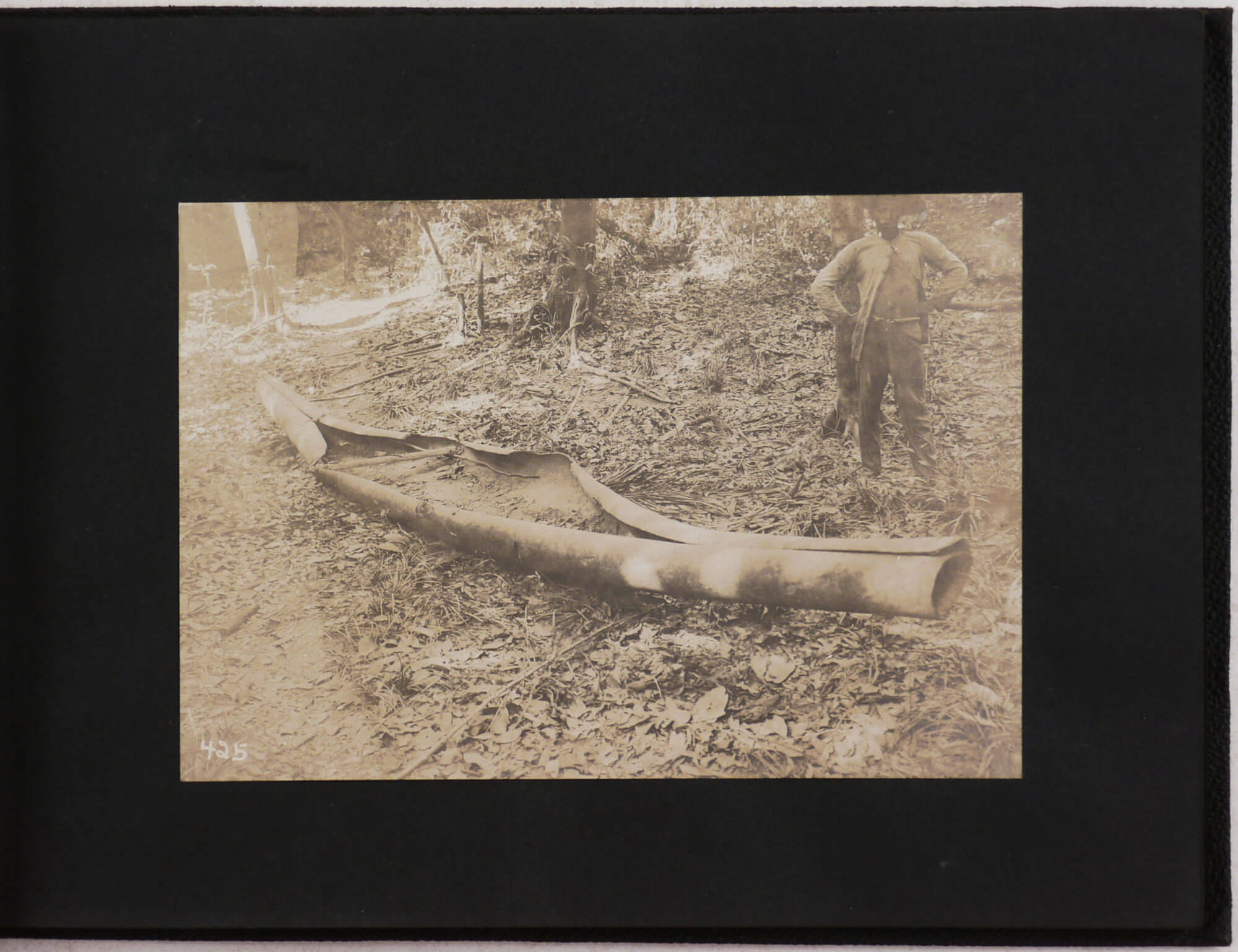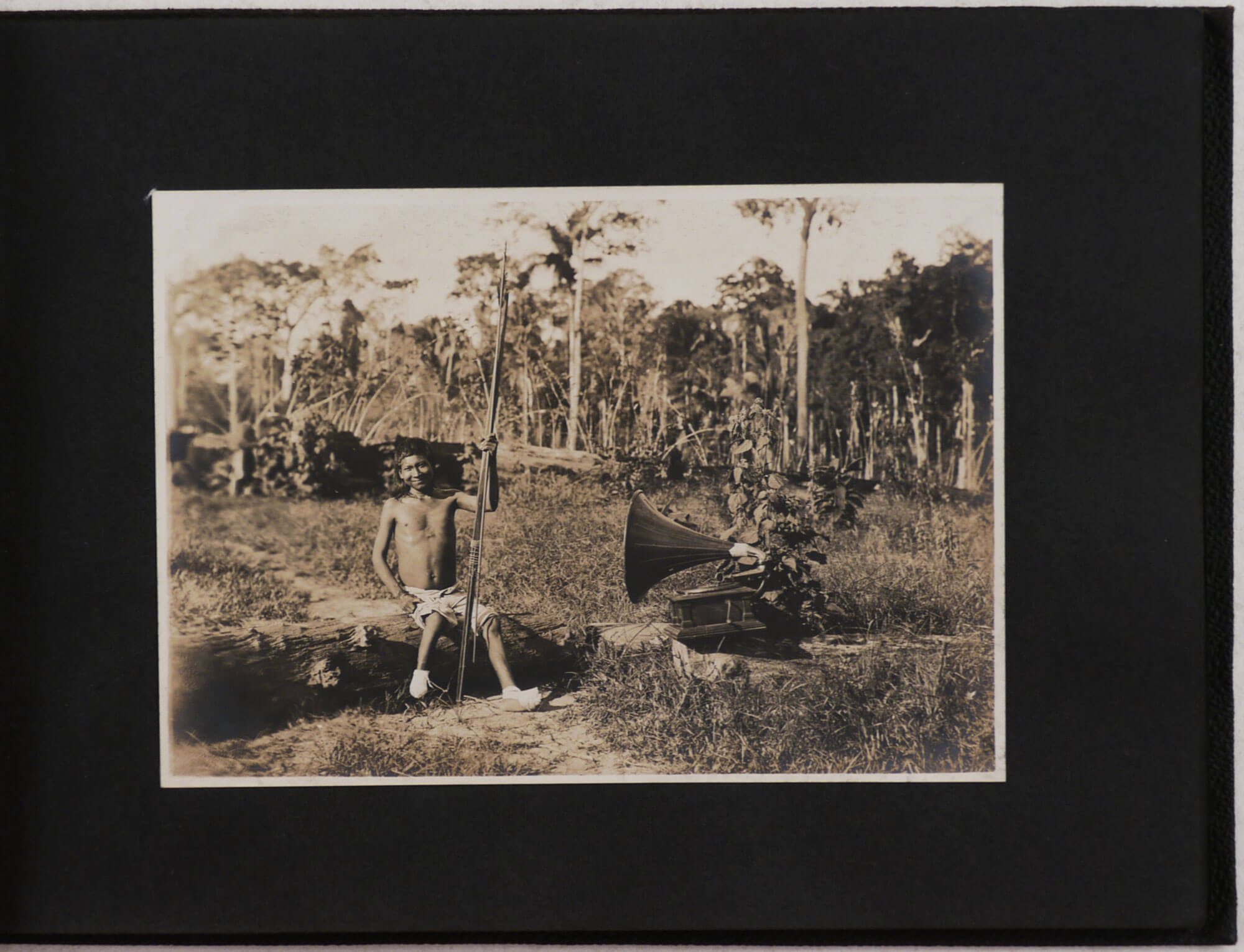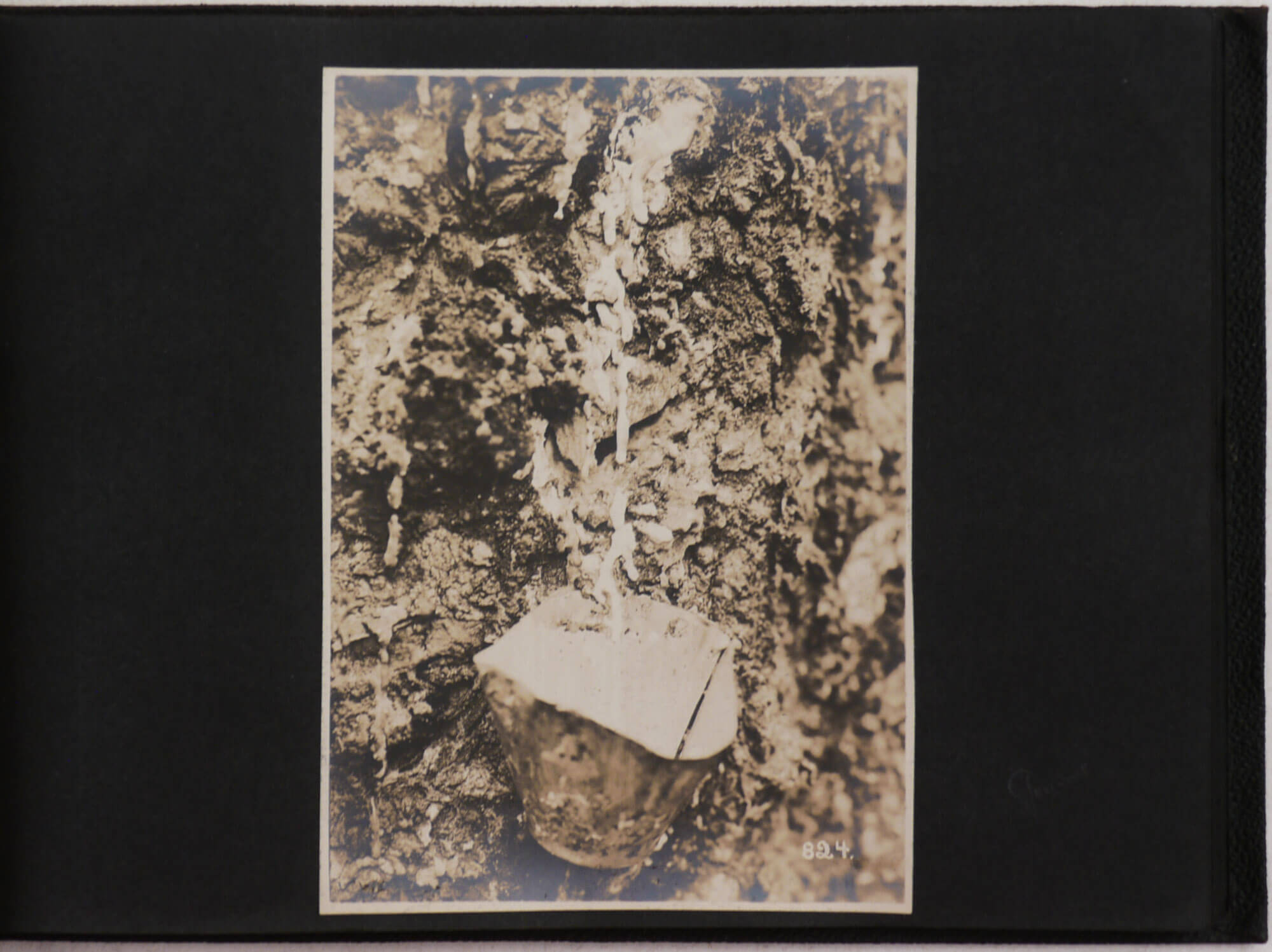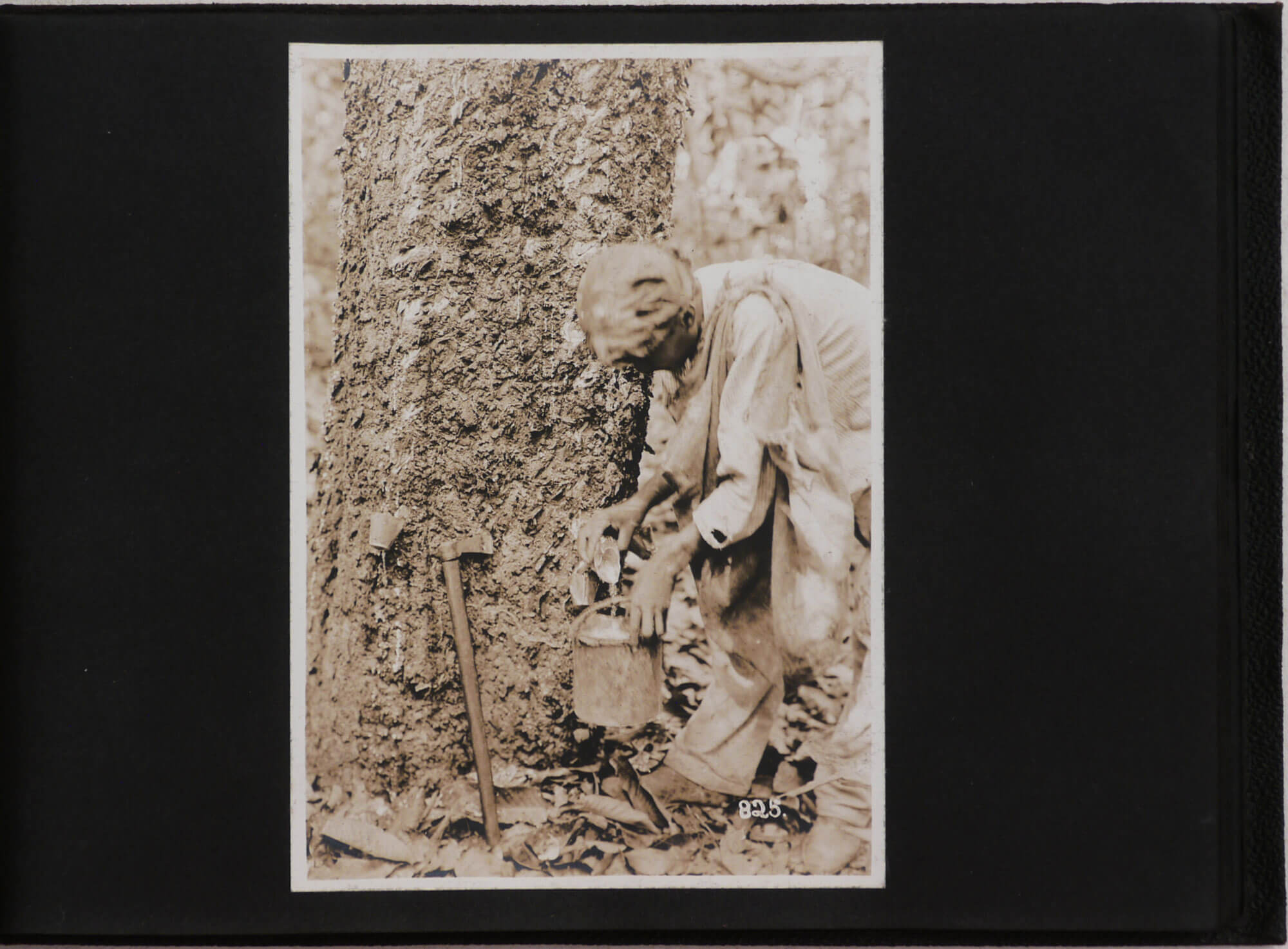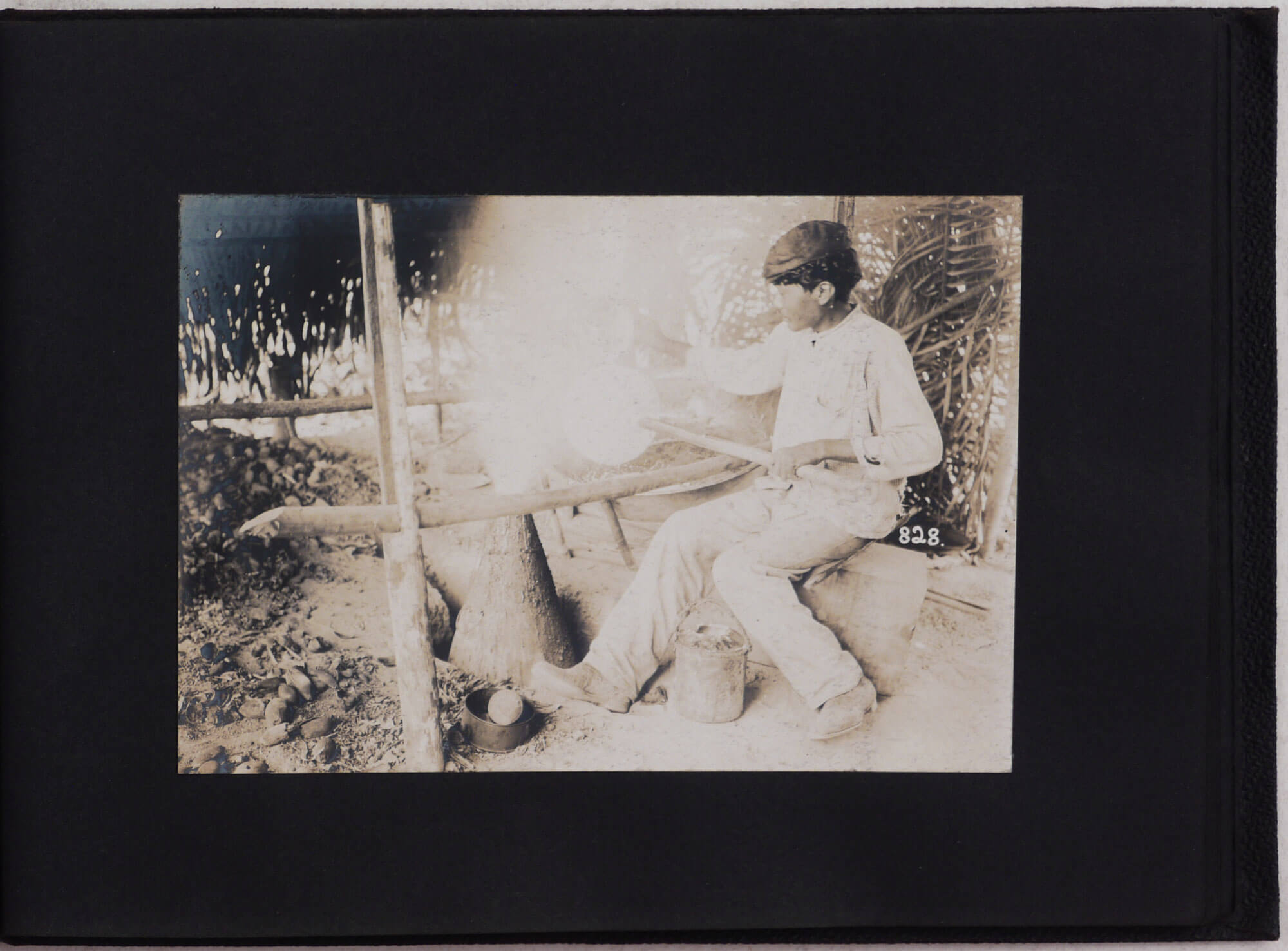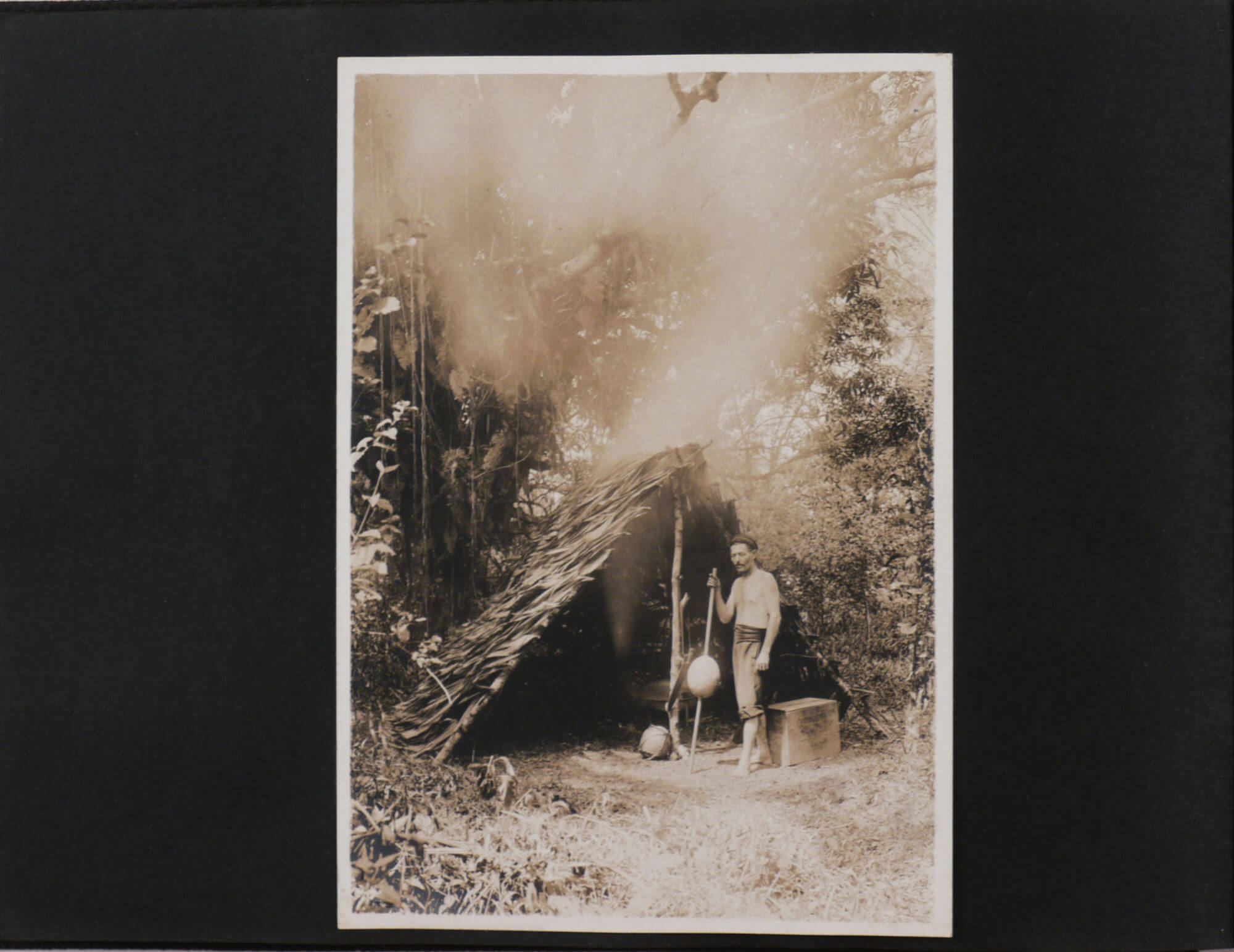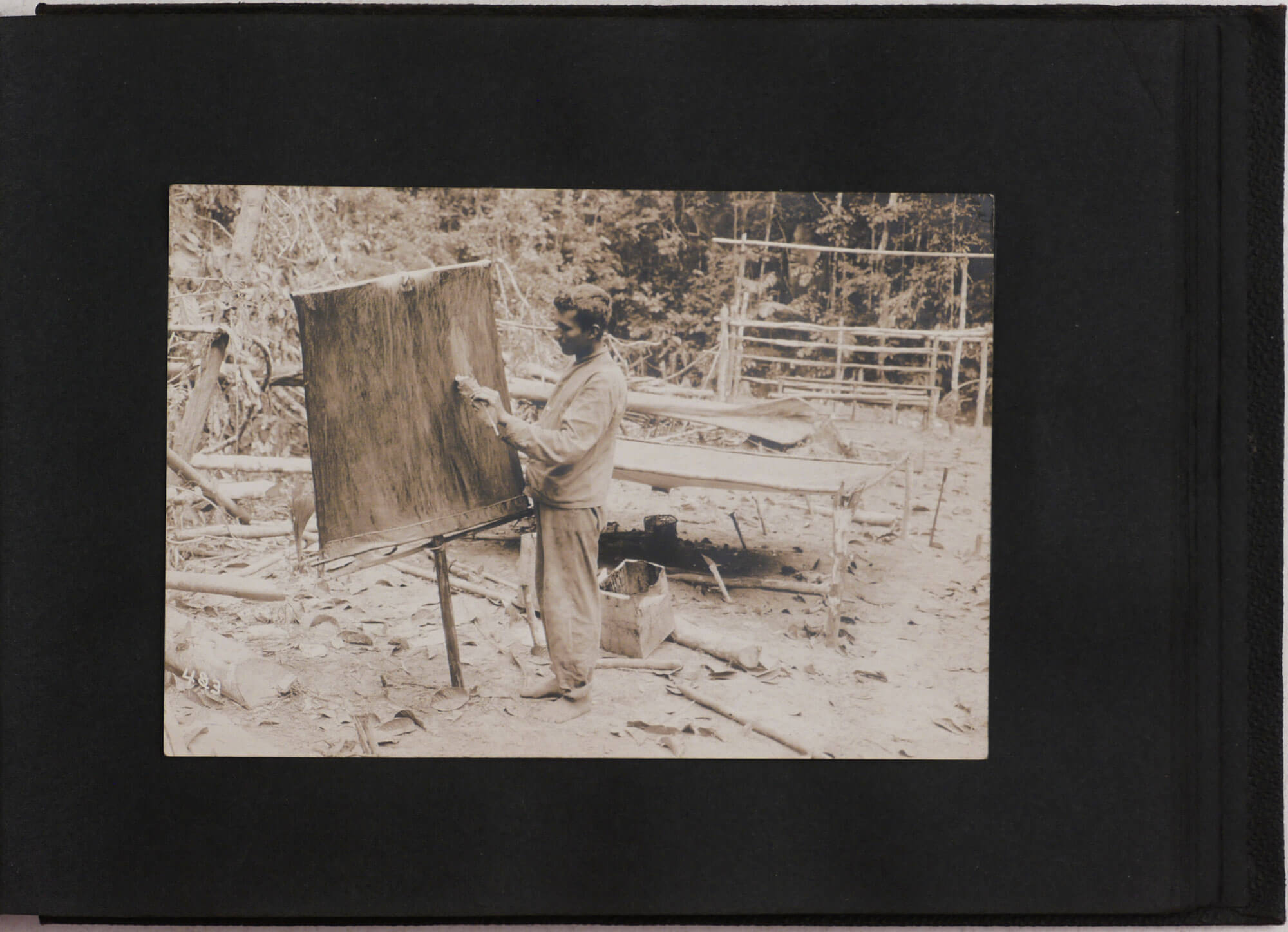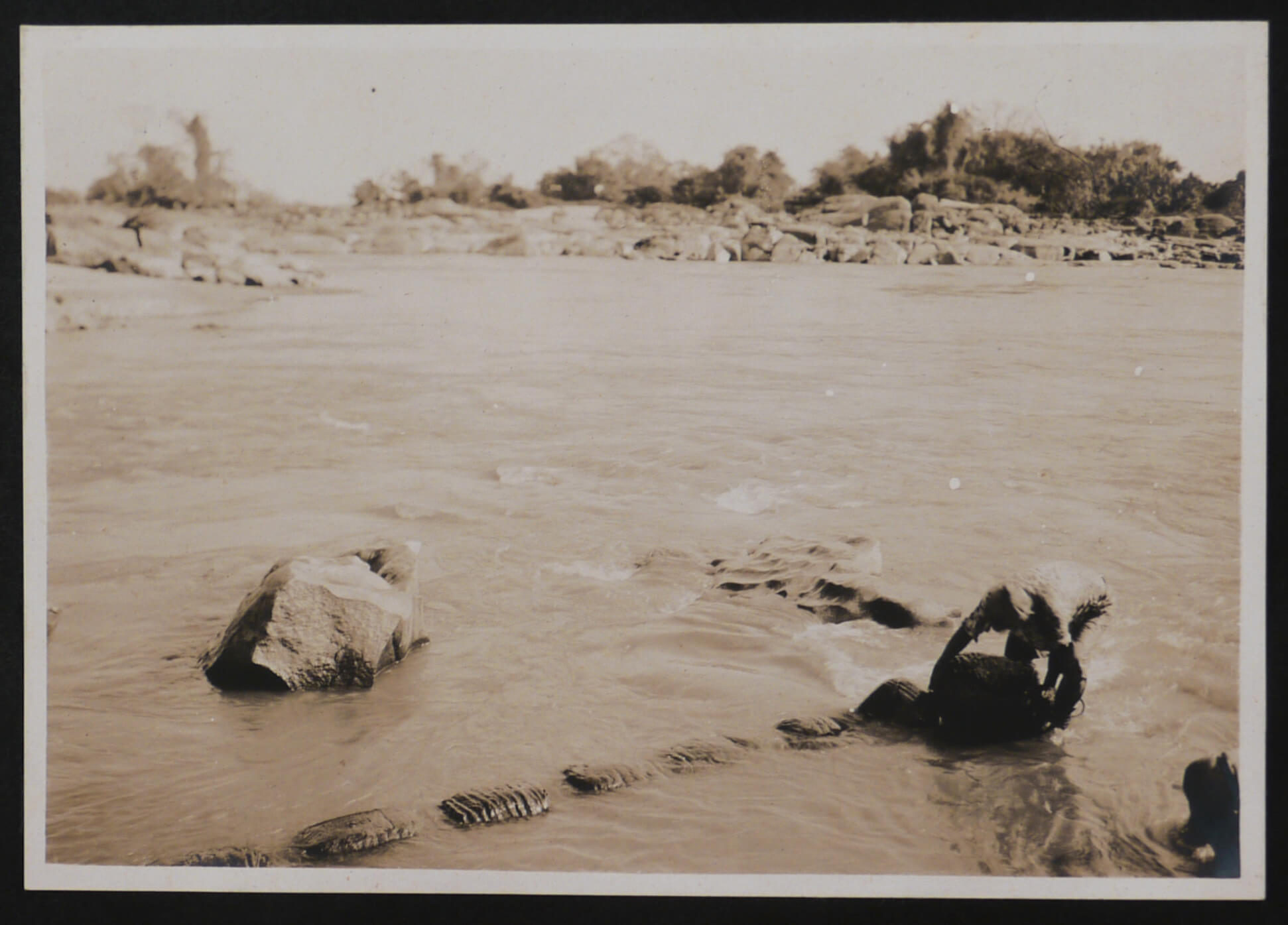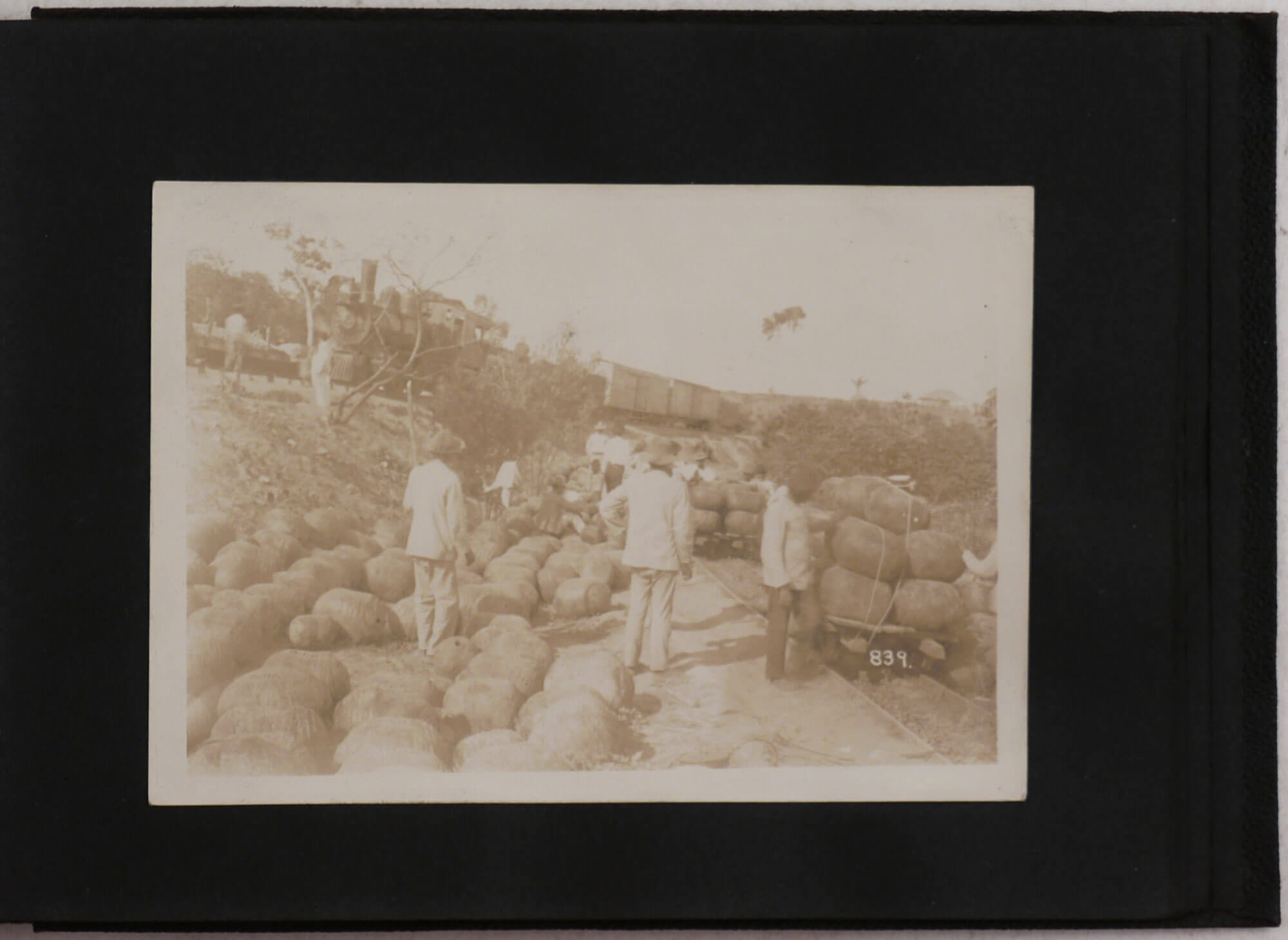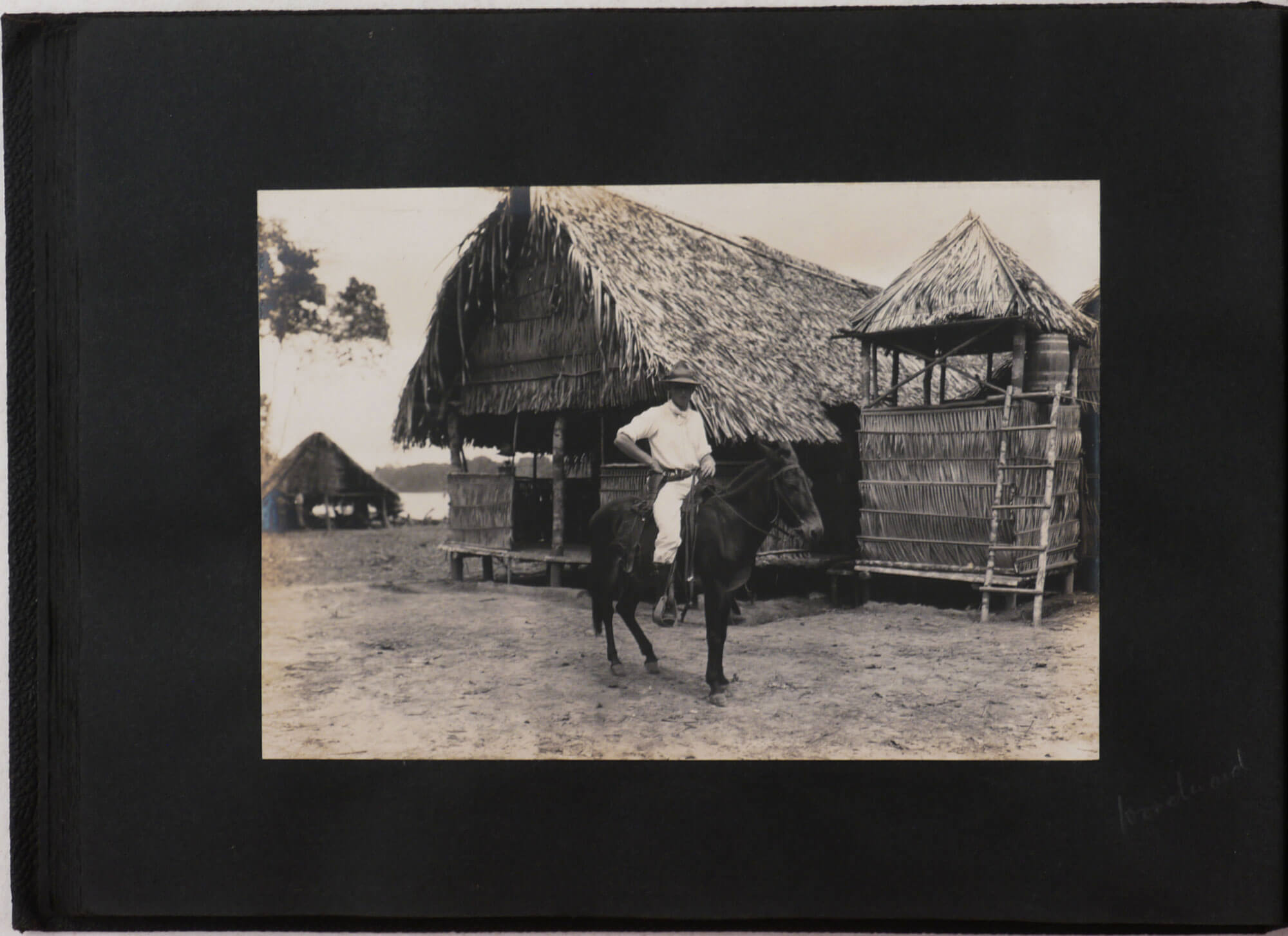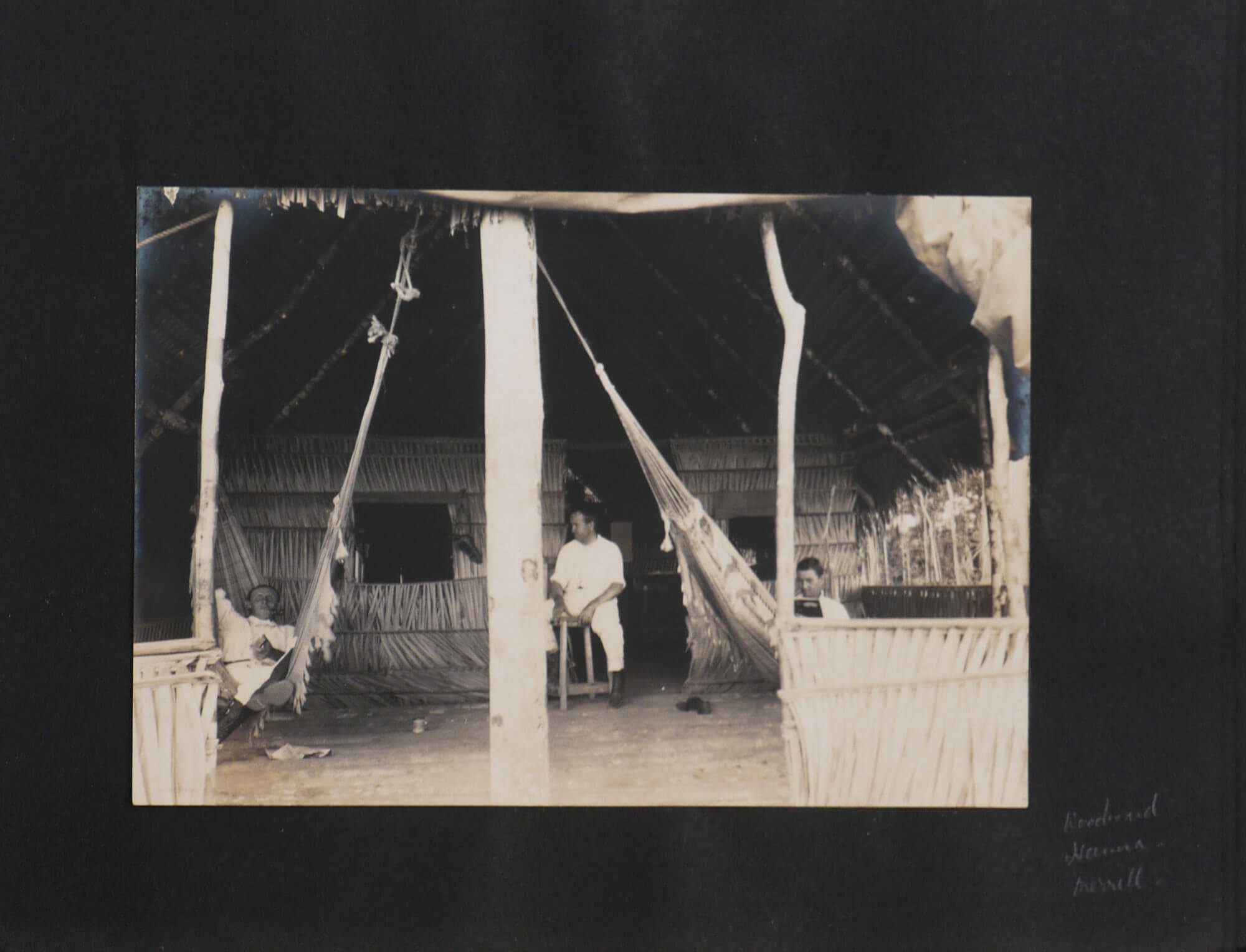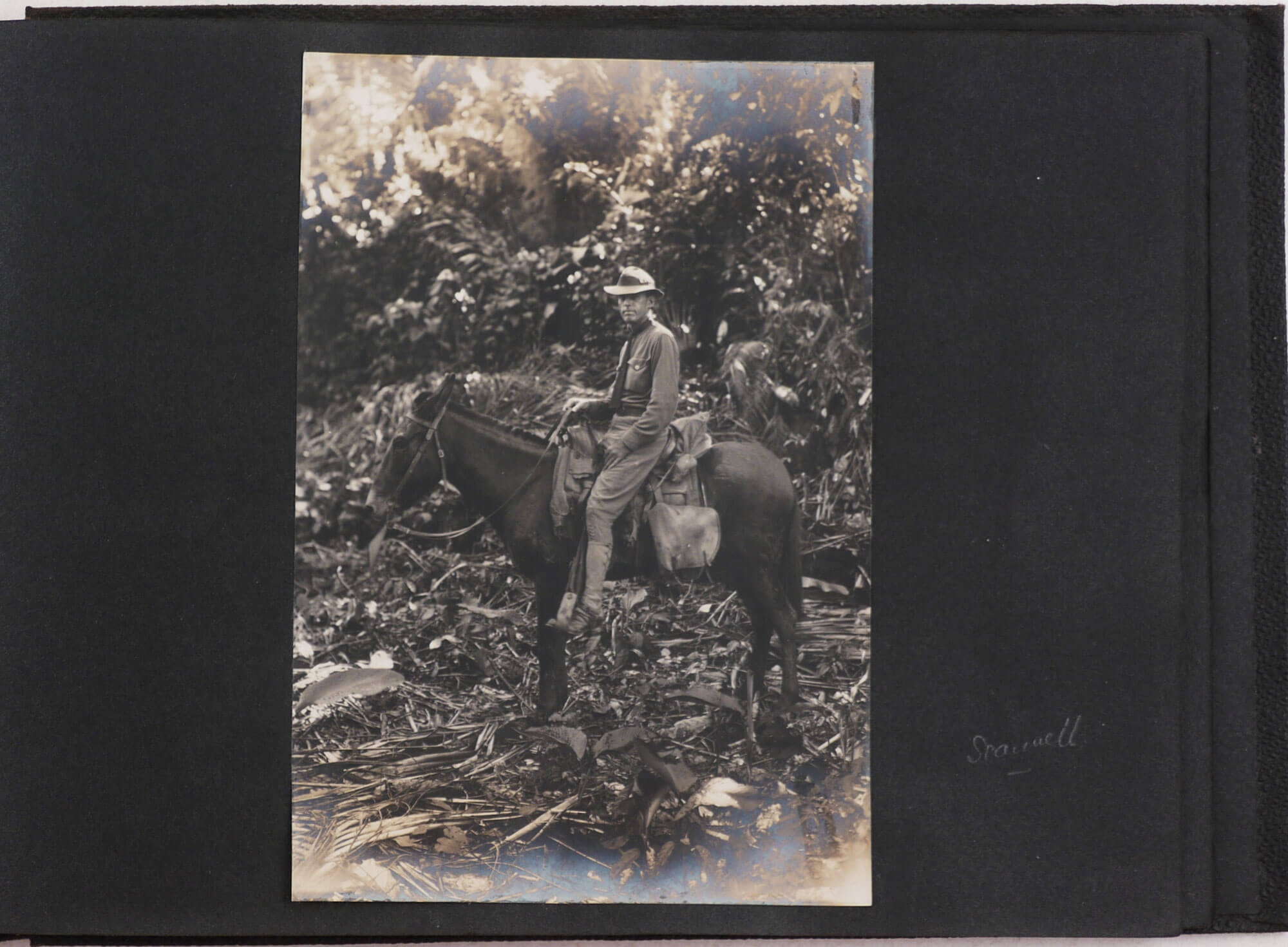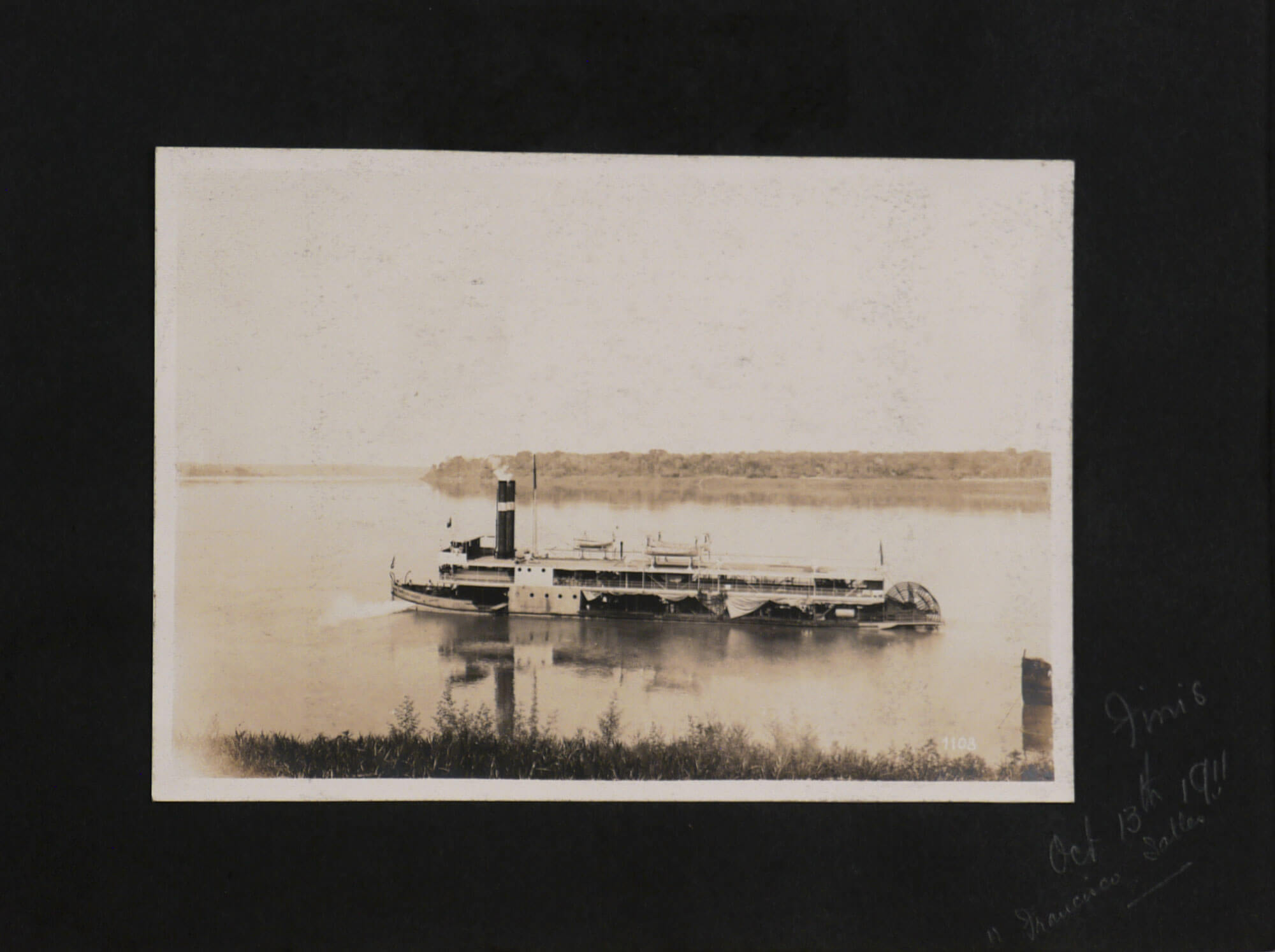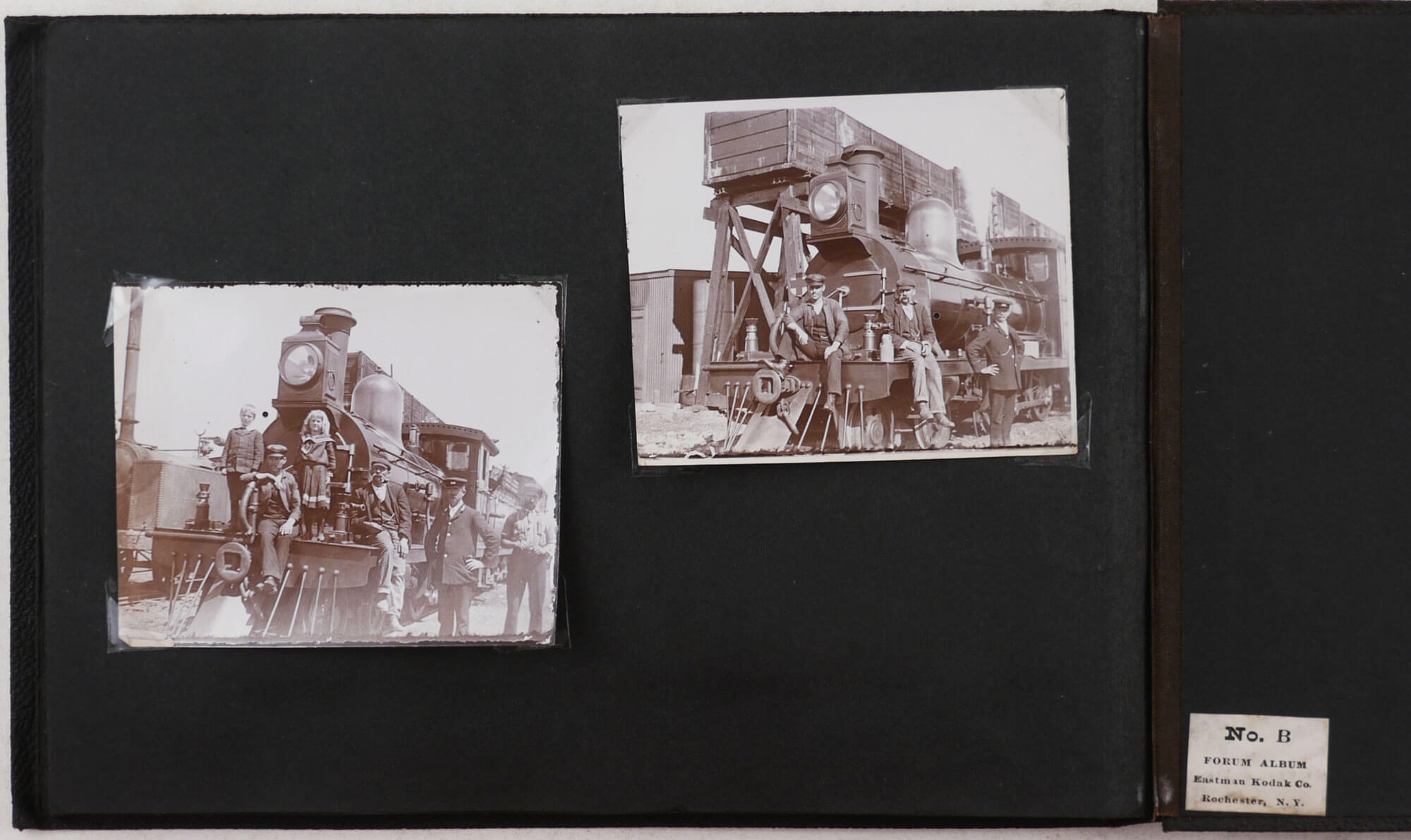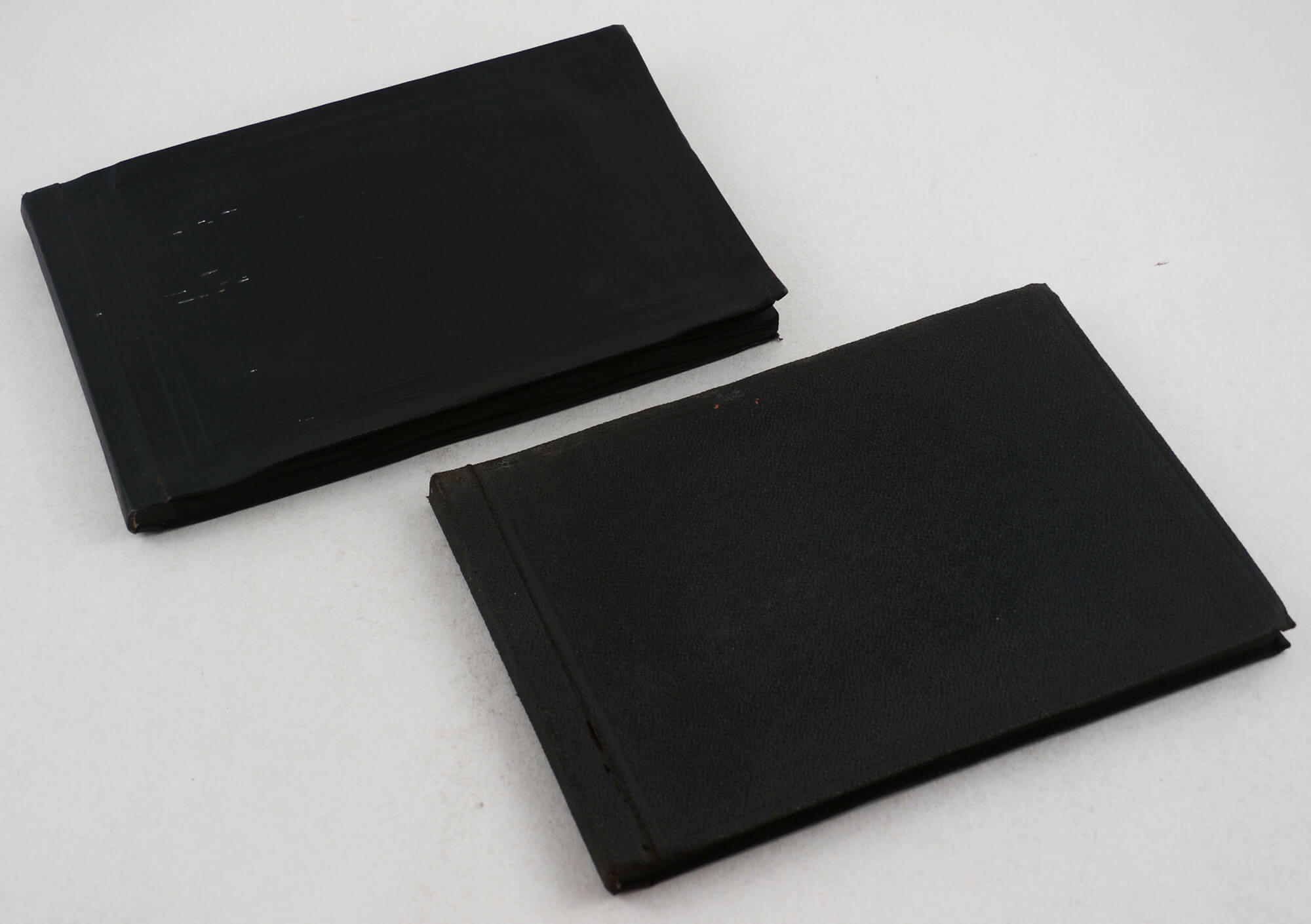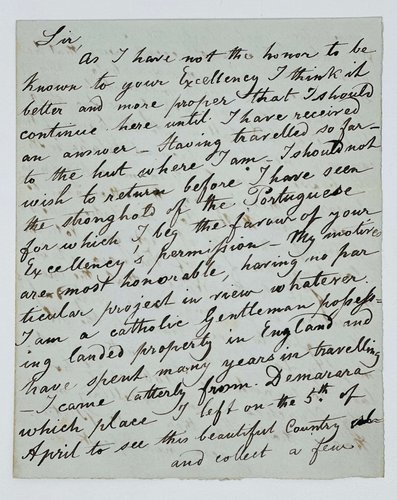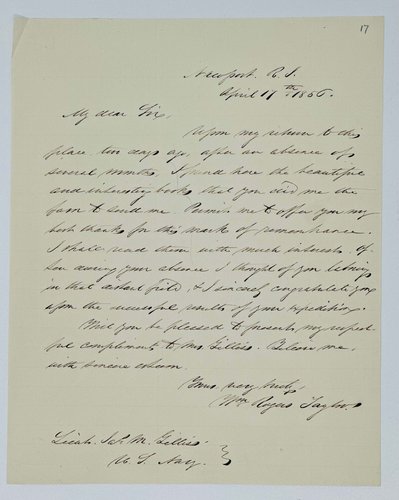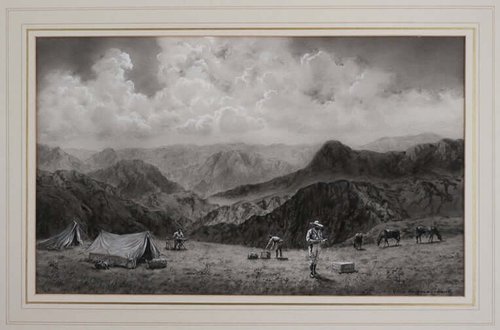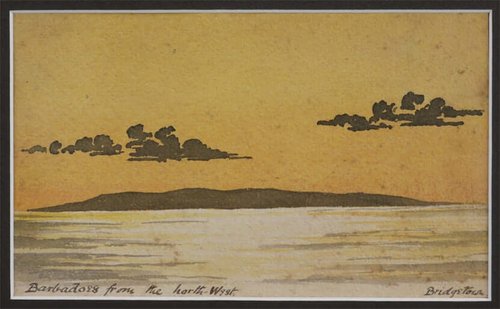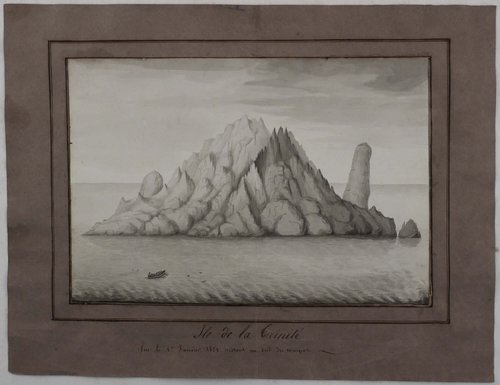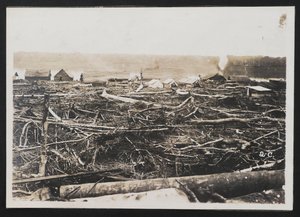
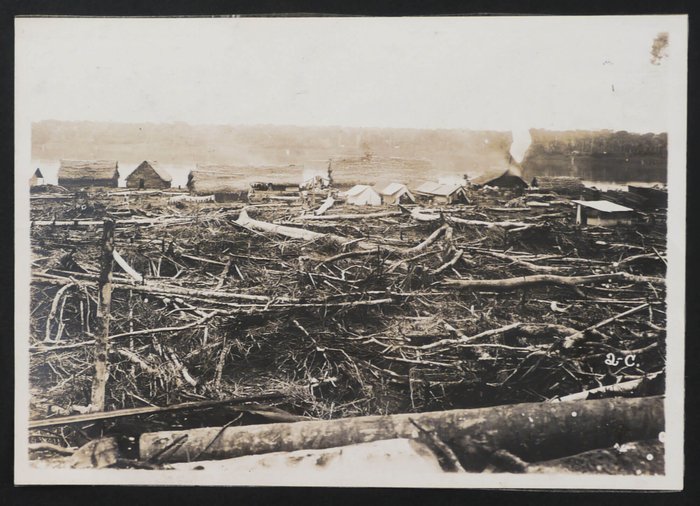
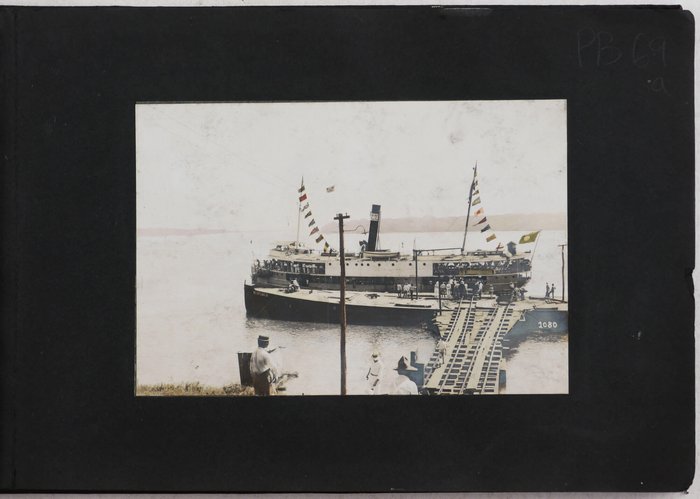
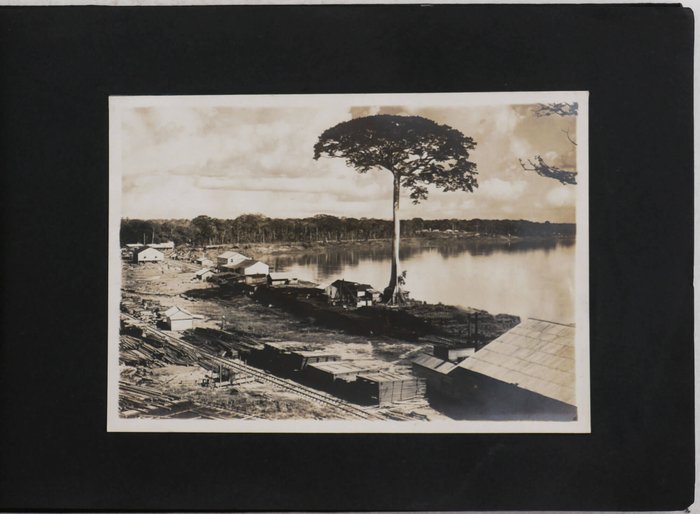
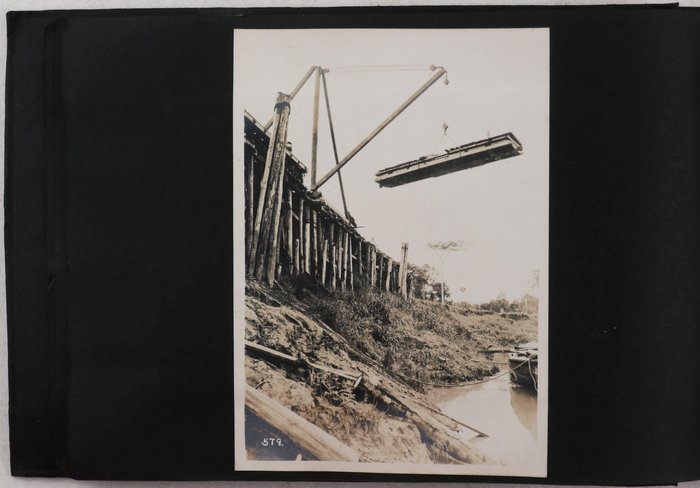
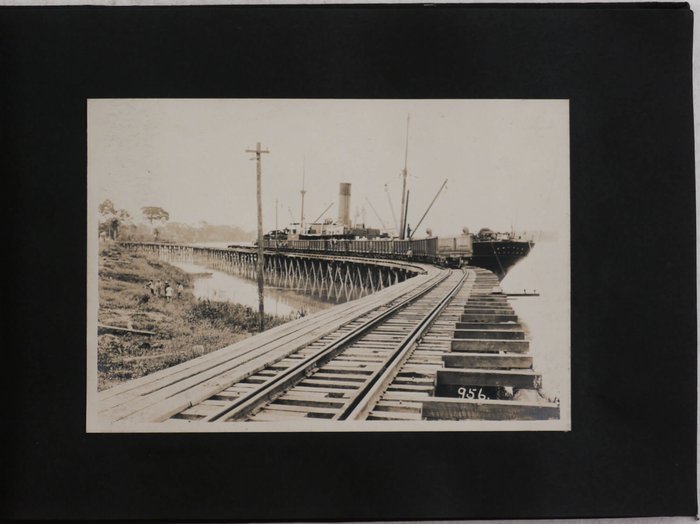
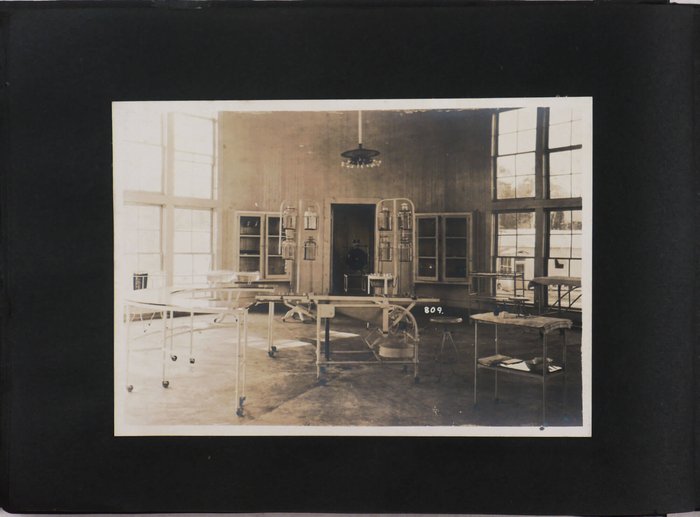
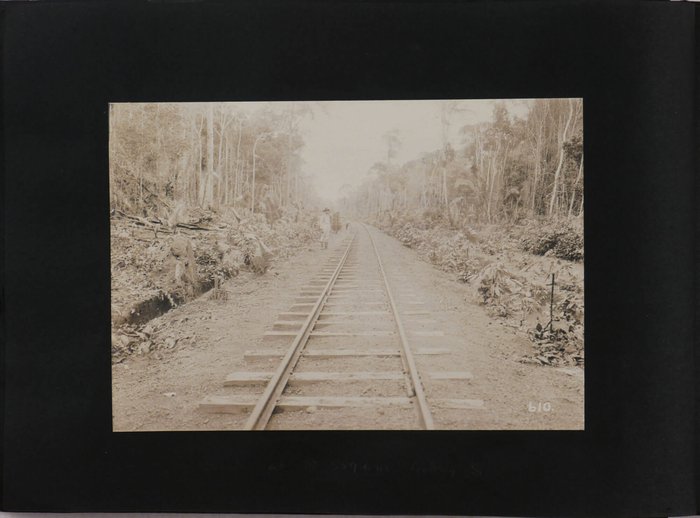
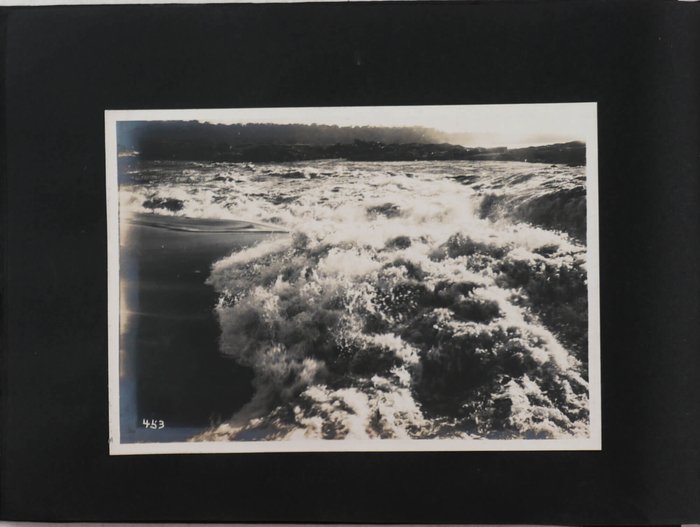
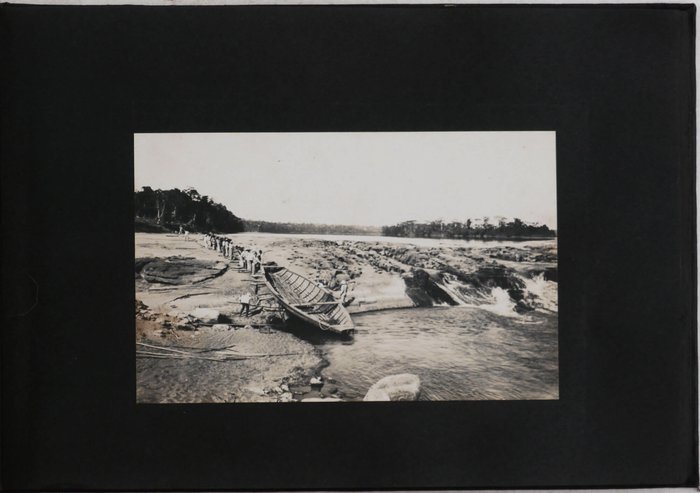
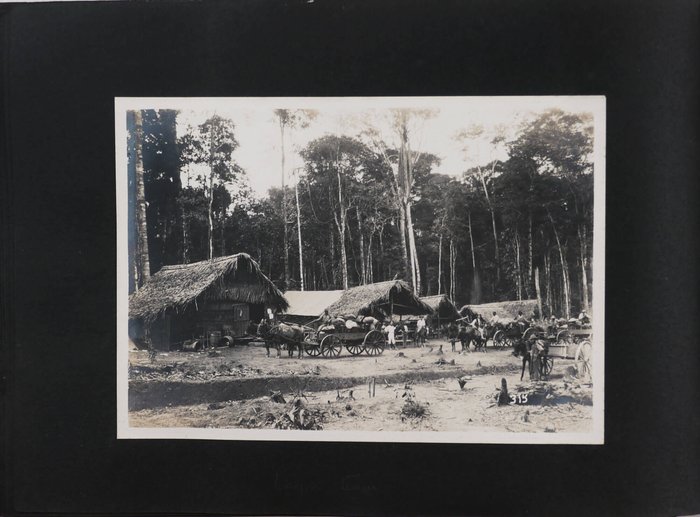
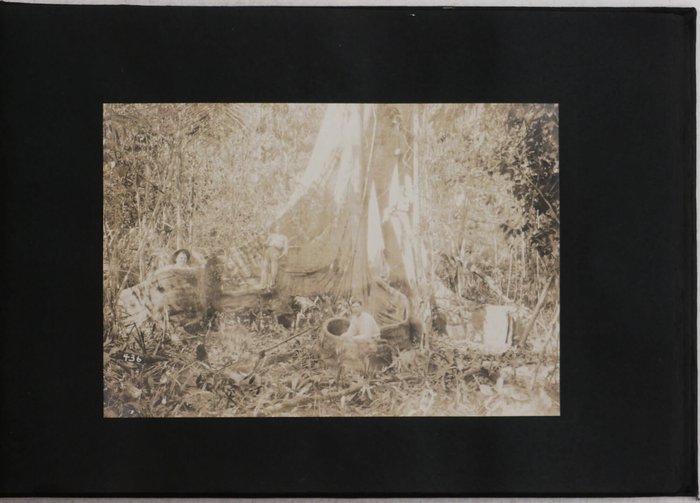
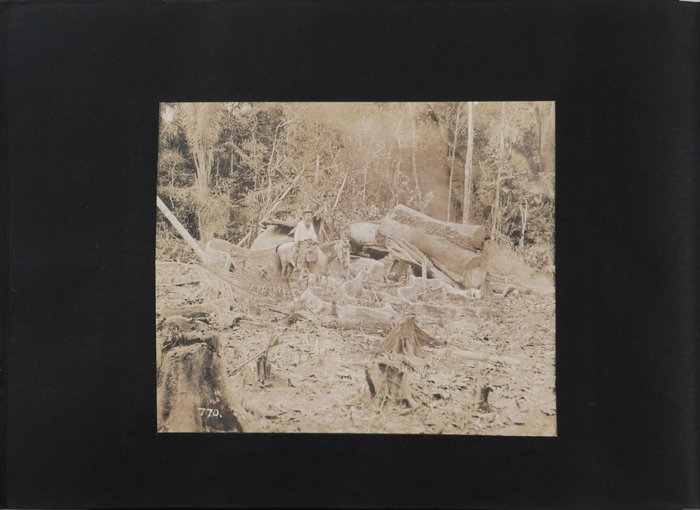
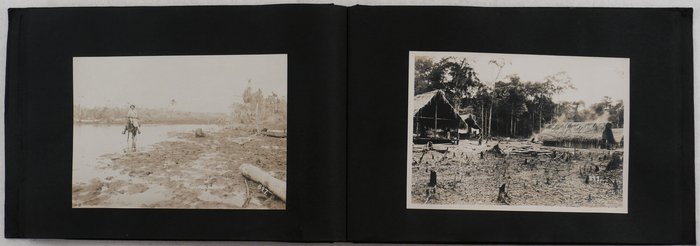
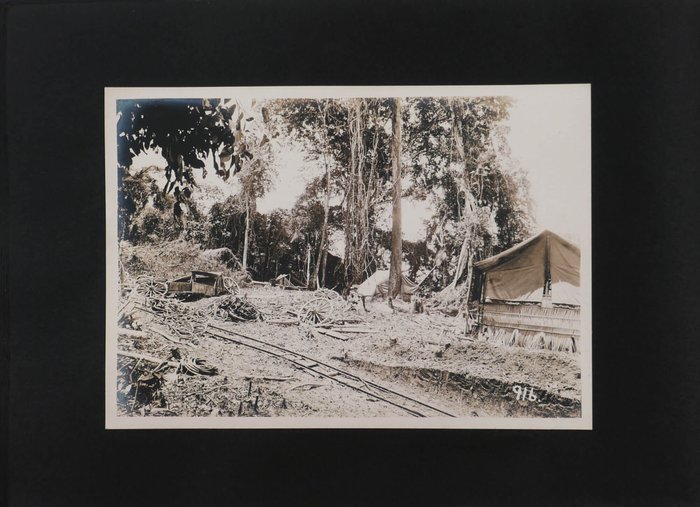
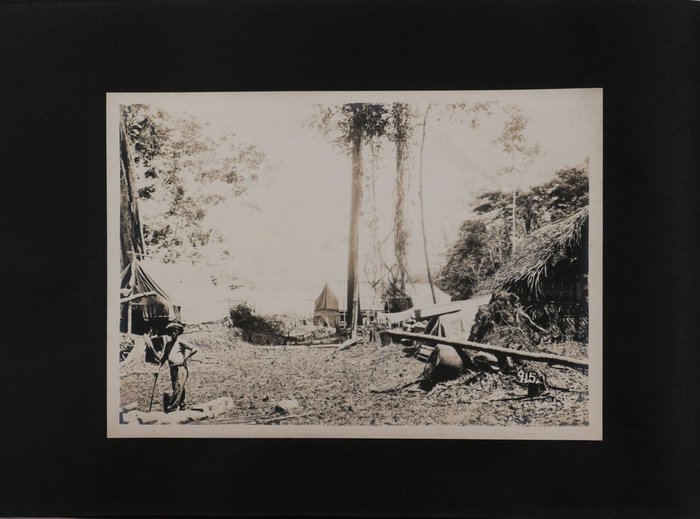
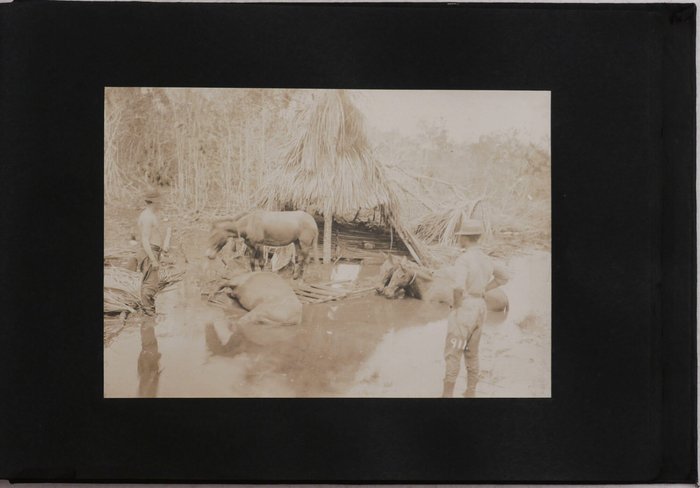
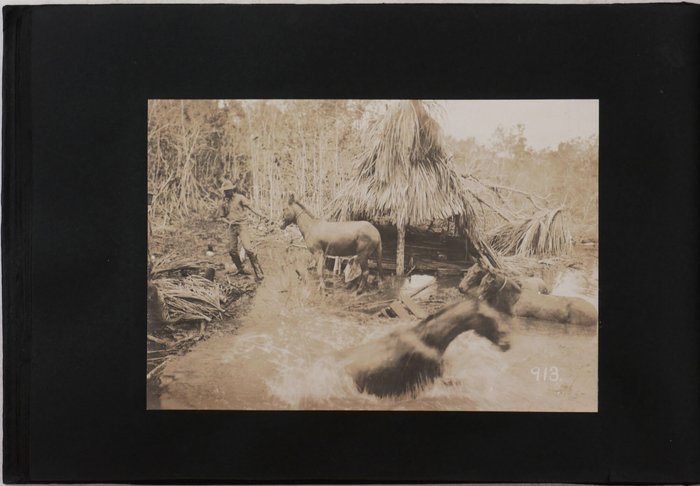
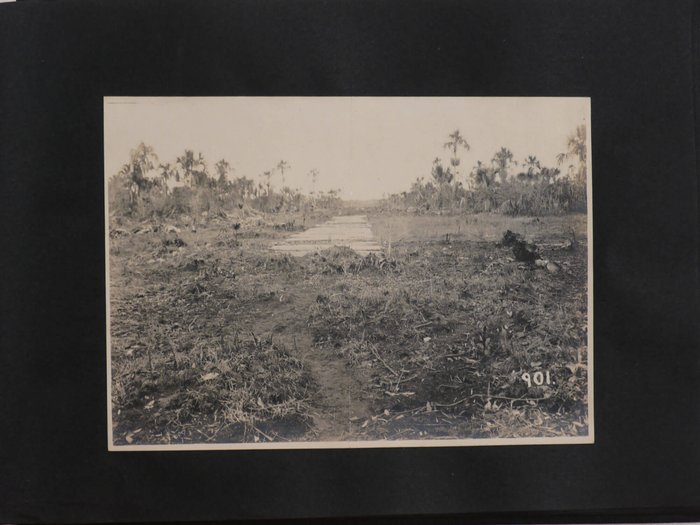
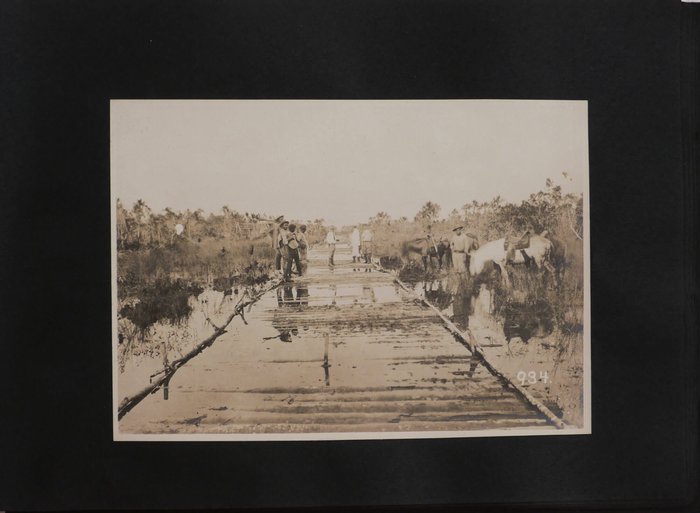
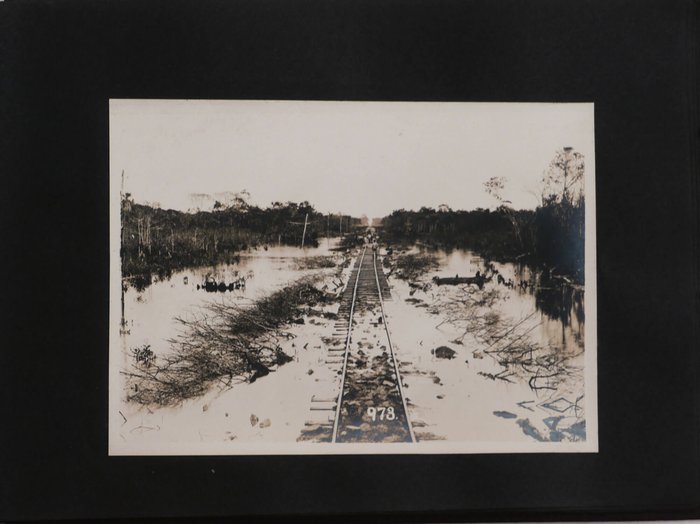
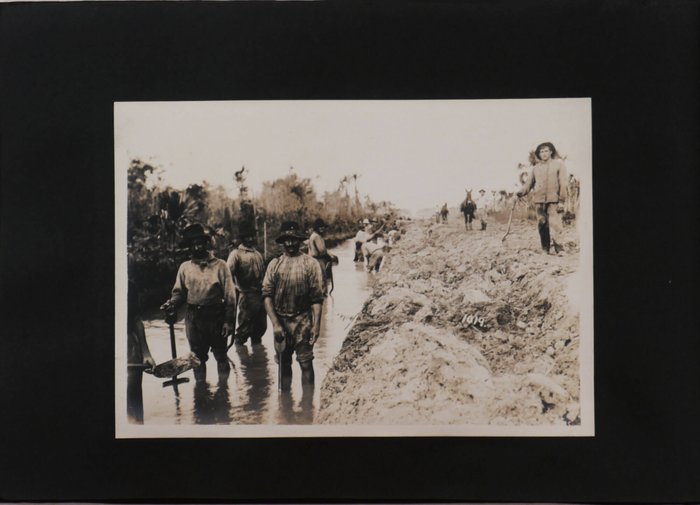
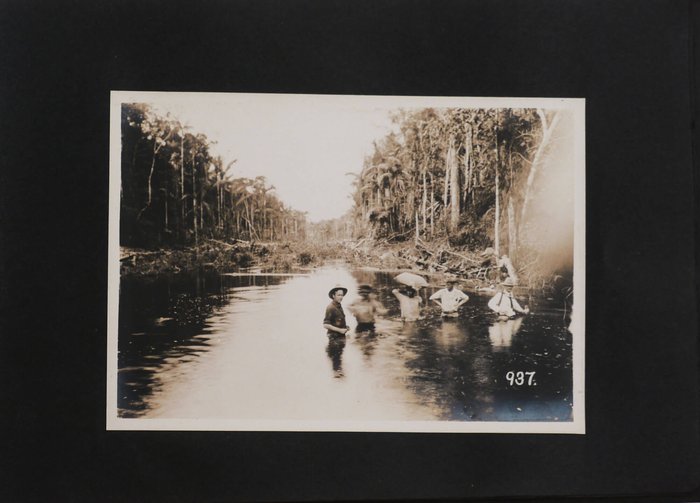
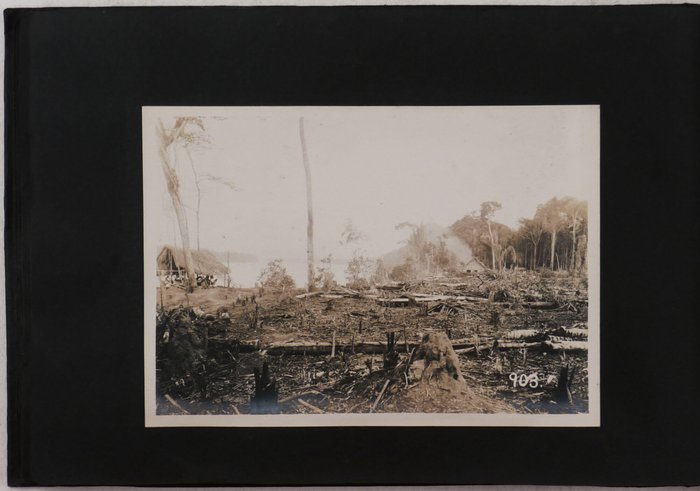
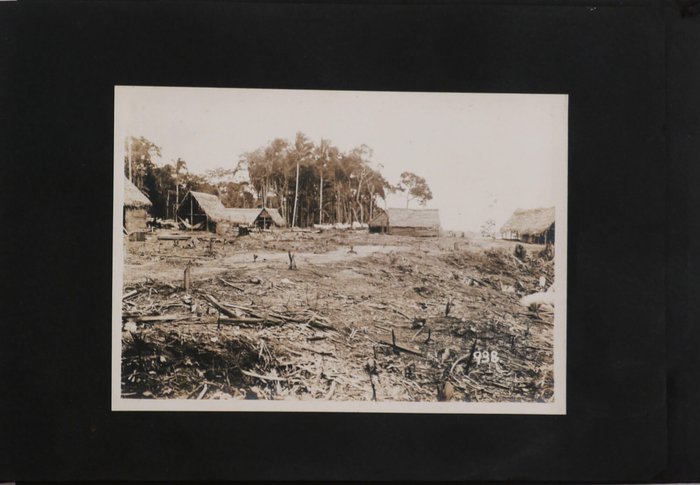
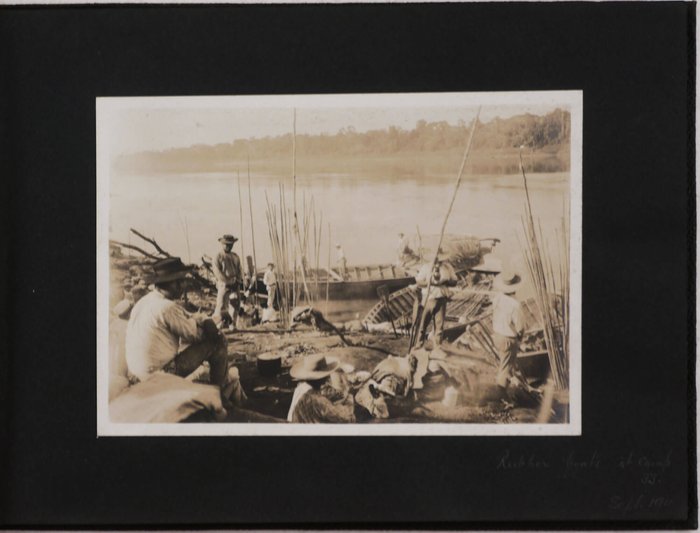
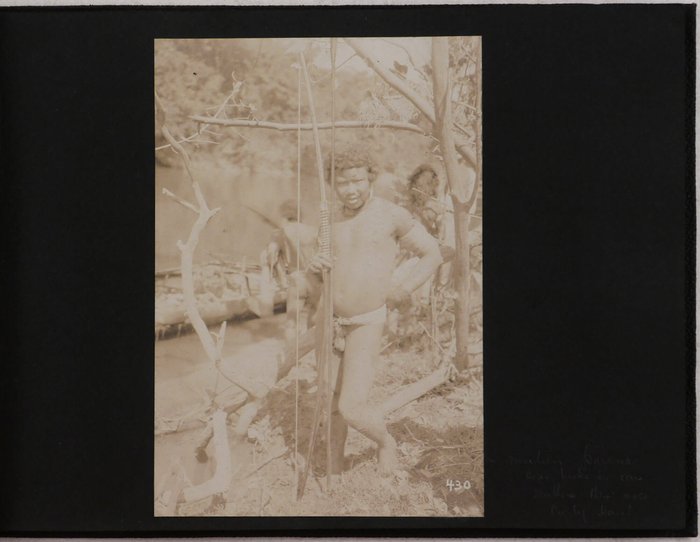
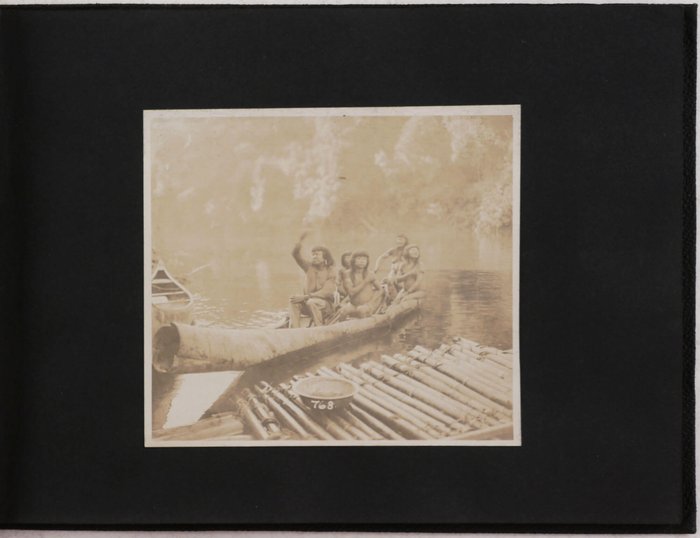
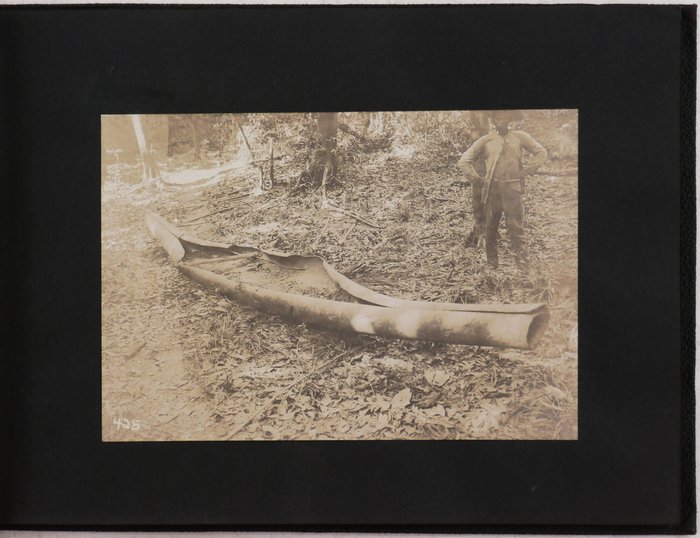
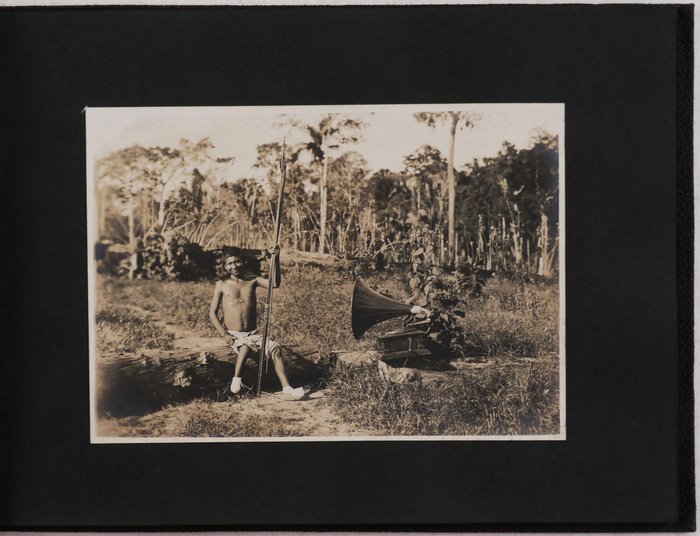
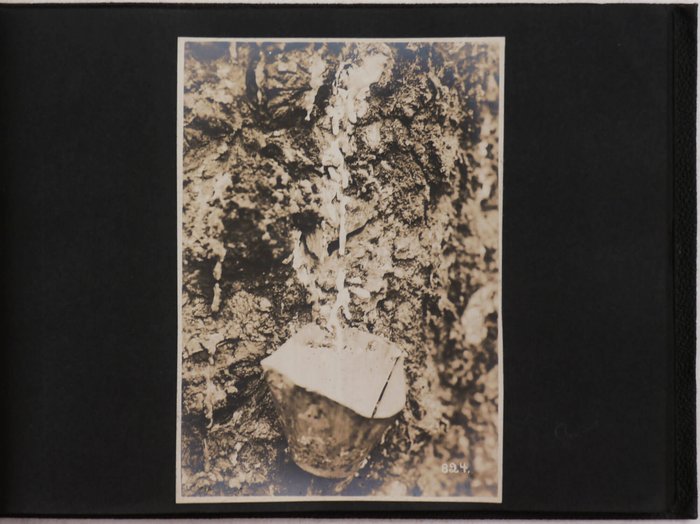
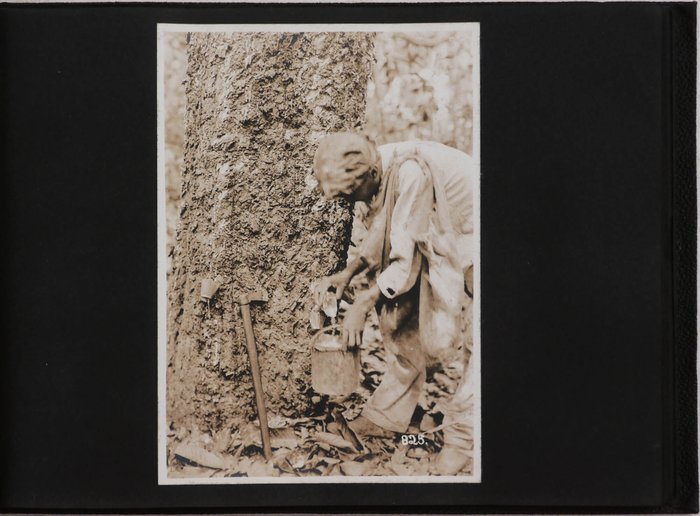
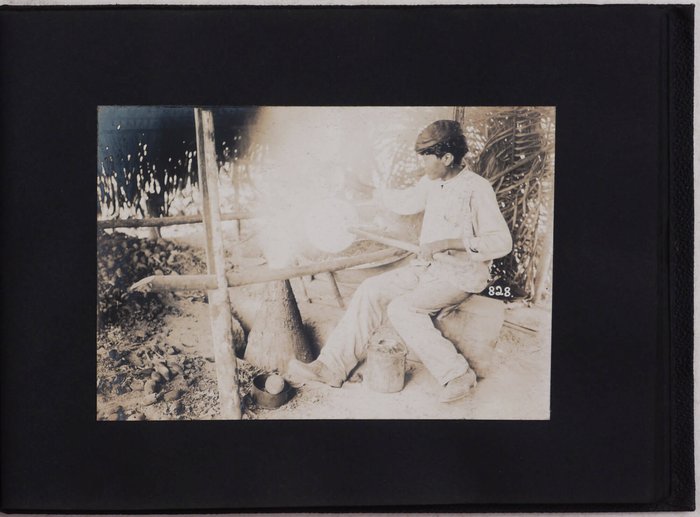
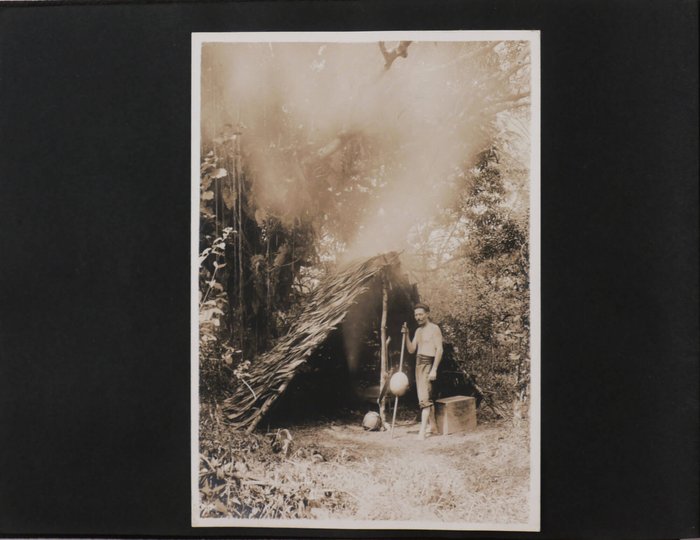
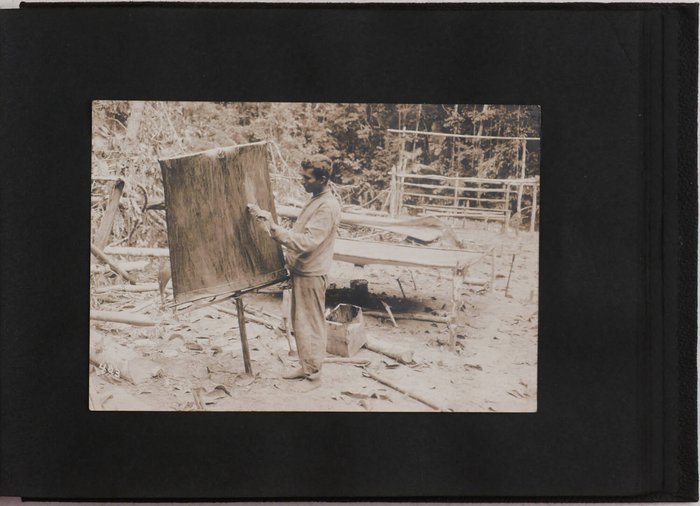
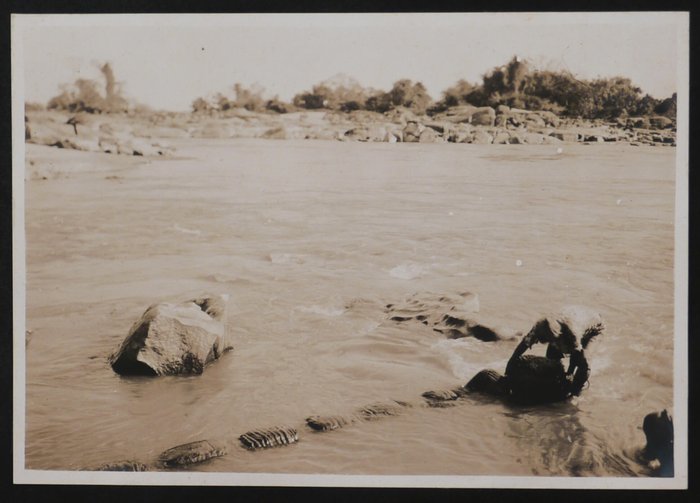
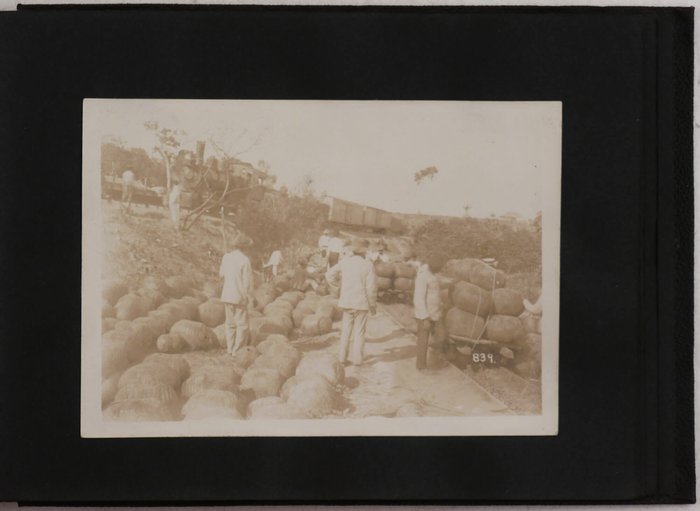
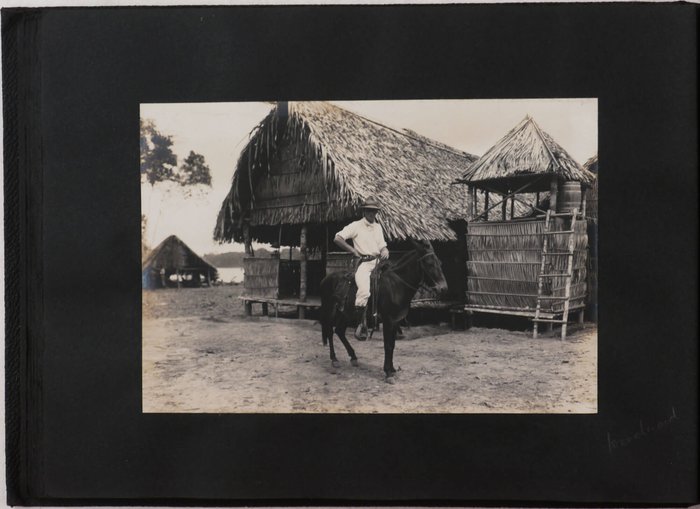
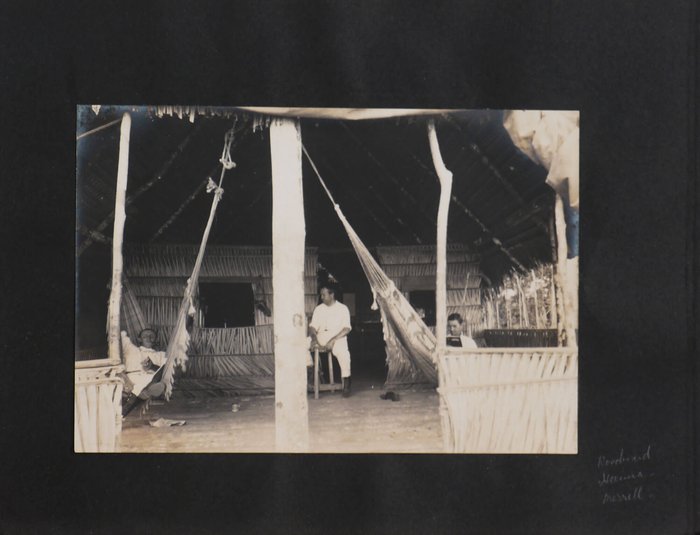
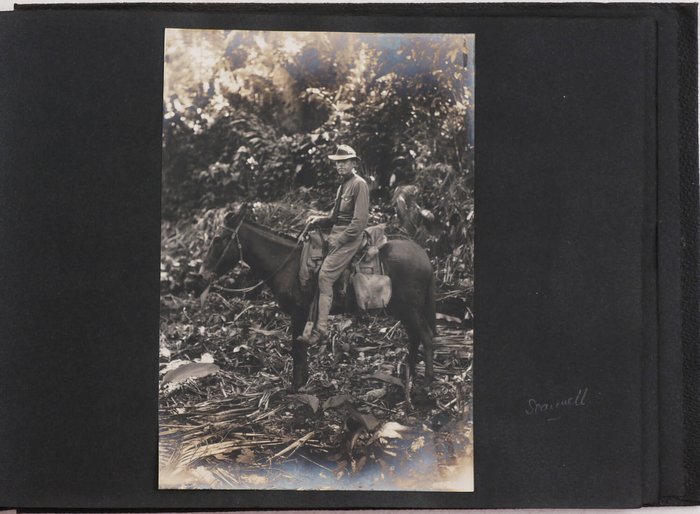
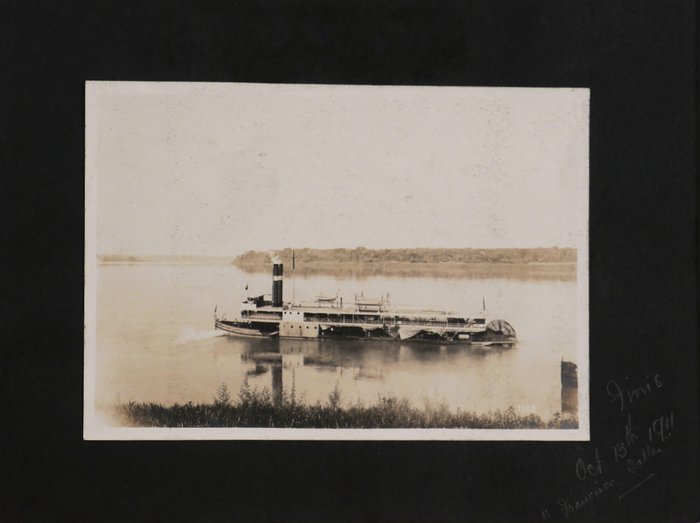
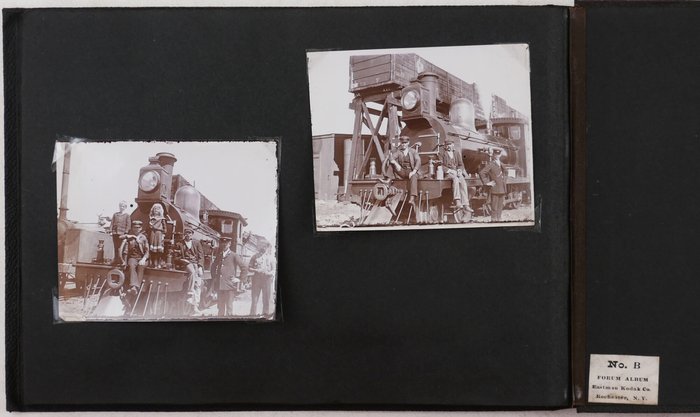
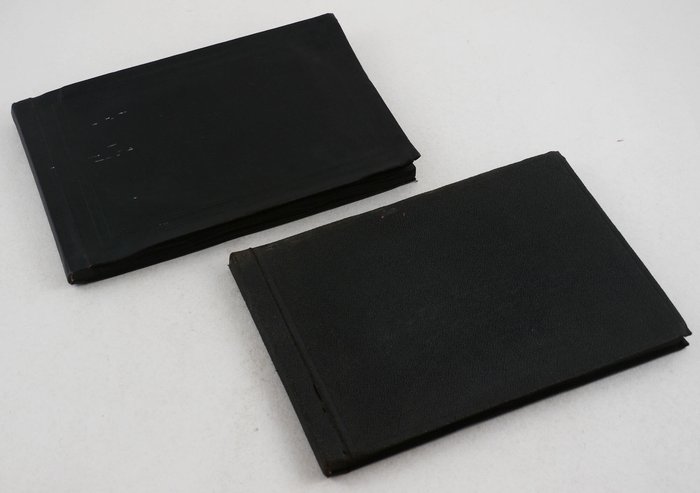
#PB69ab
1908-1911
Two Oblong Quarto albums (each ca. 18,5x27 cm or 7 ¼ x 10 ¾ in). 25 and 23 card stock leaves. With 79 (52 + 27) mounted original gelatin silver photos, mostly from ca. 12x17 cm (4 ¾ x 6 ¾ in) to ca. 10x15,5 cm (3 ¾ x 6 in); five smaller photos are ca. 7,5x10,5 cm (3x4 in). Over fifty photos are numbered in negative, over a dozen with period manuscript pencil captions on the mounts (two images are also dated September and October 1911 in manuscript). One photo is partly hand-coloured. With one mounted real photo postcard, addressed to “Dr. J.D. Laidlaw, Bridgetown, Barbados,” and dated “Dec. 9, 1911.” Two period black full cloth albums with very mild wear of extremities. One photo with minor creases, a few photos mildly faded or with mild silvering, but overall very good collection of two albums of rare interesting photos.
Historically significant extensive collection of original photos, documenting the construction of the Madeira-Mamore Railroad in Brazil in 1907-1912. The Amazon rubber boom (1879-1912) created the need for a convenient route to transport rubber from northeastern Bolivia to the US and European markets. The railway linked the Brazilian cities of Porto Velho and Guajara-Mirim (Rondonia state), circumventing the falls and rapids of the upper Madeira and Mamore Rivers, and thus provided easy access from Bolivia to the lower Amazon River and the Atlantic Ocean.
The track, built by a New York company of “May & Jekyll” (later “May, Jekyll & Randolph”), crossed several rivers (Jaci-Parana, Mutum-Parana, Caracoles, &c.) and a thirty-mile swamp, so steel bridges or concrete and masonry culverts had to be constructed (the largest bridges were built over the Jaci-Parana and Caracoles Rivers). Due to harsh working conditions, from 6,000 to 10,000 people died during the construction of tropical diseases or violence, and the railway was nicknamed a “Devil’s Railroad.” In an attempt to improve the conditions, the company built a hospital for the employees in Candelaria, three kilometres south of Porto Velho. Shortly after the railroad’s completion, Bolivian rubber lost its attractiveness to buyers due to the competition of cheaper East-Asian and synthetic rubber. The need for Madeira-Mamore Railroad diminished, although the Brazilian government maintained its sections until the final closure in 1972. The current route between Porto Velho and Guajara-Mirim is served by a highway.
The album was apparently compiled by an American member of the railway construction team. Captions to several photos identify seven Americans taking part in the construction, including “Jim Laidlaw,” “Hamish Laidlaw,” “Woodward”, “Hanna”, “Merrell,” “Scanwell,” and “self.” Over fifty photos were taken by an American photographer, Dana Merrill, who was employed by the “Madeira-Mamore Railway Co.” to document the construction. The collections of Merrill’s original photos of the railway are now deposited in the New York Public Library (see more) and the Museo do Ipiranga at the University of Sao Paulo (see more). Detailed captions to the photos from their collections helped to identify Merrell’s images from our albums.
Interesting images include three identified views of Porto Velho, showing tents on the cleared site in ca. 1908 (image “2-C”), a developed settlement with railway tracks in the foreground, and a general view taken from the river (image “980”). Numerous photos show railway tracks and construction operations: lifting building supplies with a crane, trail building in the jungle, makeshift bridges over forest streams, “engineers’ pack train” (image “446”), clearing sites, building tracks in the swamp, construction camps, native workers in a ditch filled with water, Americans and their horses struggling through swampy areas, &c. Two photos show an abandoned steam engine and a sawmill of the earlier unsuccessful attempt of railway construction by the Collins Brothers in 1878-1879 (images “301” and “334”). There are also images of the company’s steamers - “Francisco Salles” (a visible sign), an ocean steamer docked at a river wharf (most likely, at Candelaria, image “956”), a smaller one-funnel boat, &c. A hand-coloured photo features a steamer with the sign “M.-M. Rway Co.” on the funnel, docking to a river barge with the sign “Aripuana”. The other photos show the Madeira River (a moonlit view with “Bolivia on op.[posite] side,” a view from Tres Irmaos - image “424”), falls and rapids (Theotonia and Girao), portage sites with workers dragging boats over land, facilities for the engineers and managers in Candelaria (bungalows, interior of the operation room and recovery ward in the hospital), &c.
Two photos portray the Karipuna people from the Mutum-Parana River; another image shows a native canoe made of bark. Two photos picture a native boy (with the right foot amputated) listening to a phonograph. A series of images documents rubber harvesting: tapping, collecting milk, smoking it to cure and form a bale, coveting fabric with rubber, transporting rubber bales to a train, portraits of the workers &c. The real photo postcard, dated “Dec. 9, 1911,” shows a railway track with the construction tent camp and has a Brazilian post stamp. Most likely written by the album’s compiler, it is addressed to “Dr. J.D. Laidlaw, Bridgetown, Barbados.”
Overall an important original source on the history of the Madeira-Mamore Railroad and rubber industry in Brazil during the Amazon rubber boom of 1879-1912.
A list of pencil captions: [Album 1]: P.[orto] V.[elho], 1908; Track at [St.?] 559+40 looking S.; Girao [Falls]; [Fall of] Theotonio; Trail on Collins […?] line (kilometer 42 on line); Trail 27 [leading?] to 28, Tres Irmaos; Wagon team; Self, Jim Laidlaw; Hamish Laidlaw; [Album 2]: Bolivia on op. site, camp 33; Rubber boats at camp 33, Sept. 1911; On Mutum-Parana, boar tusks in ears, feathers thro’ nose, curly hair!; Seringnero; Gomme; Araras; Woodward; Woodward, Hanna, Merrell; [Scanwell?]; Finis – Oct. 13th 1911, “Francisco Salles.”

